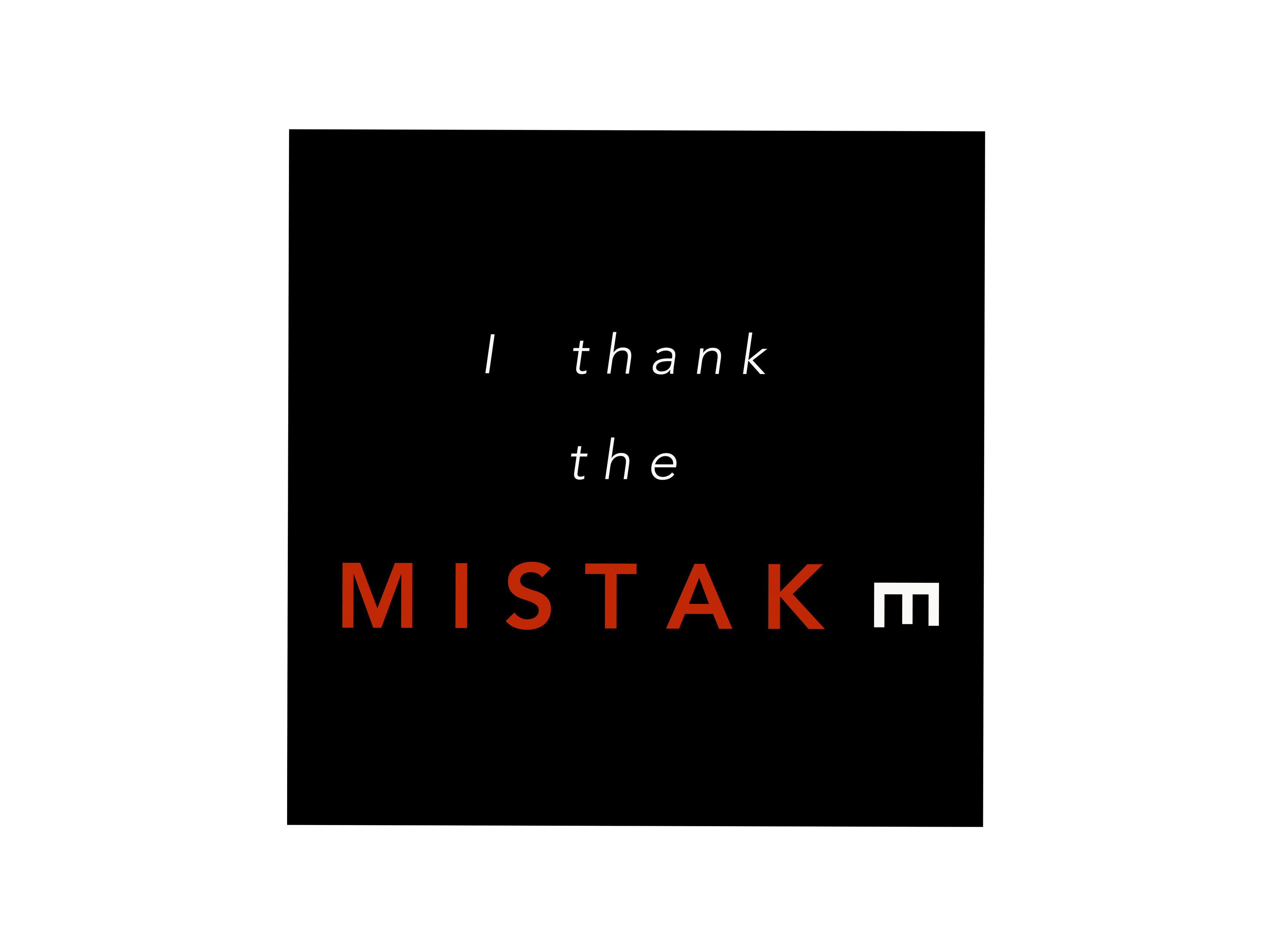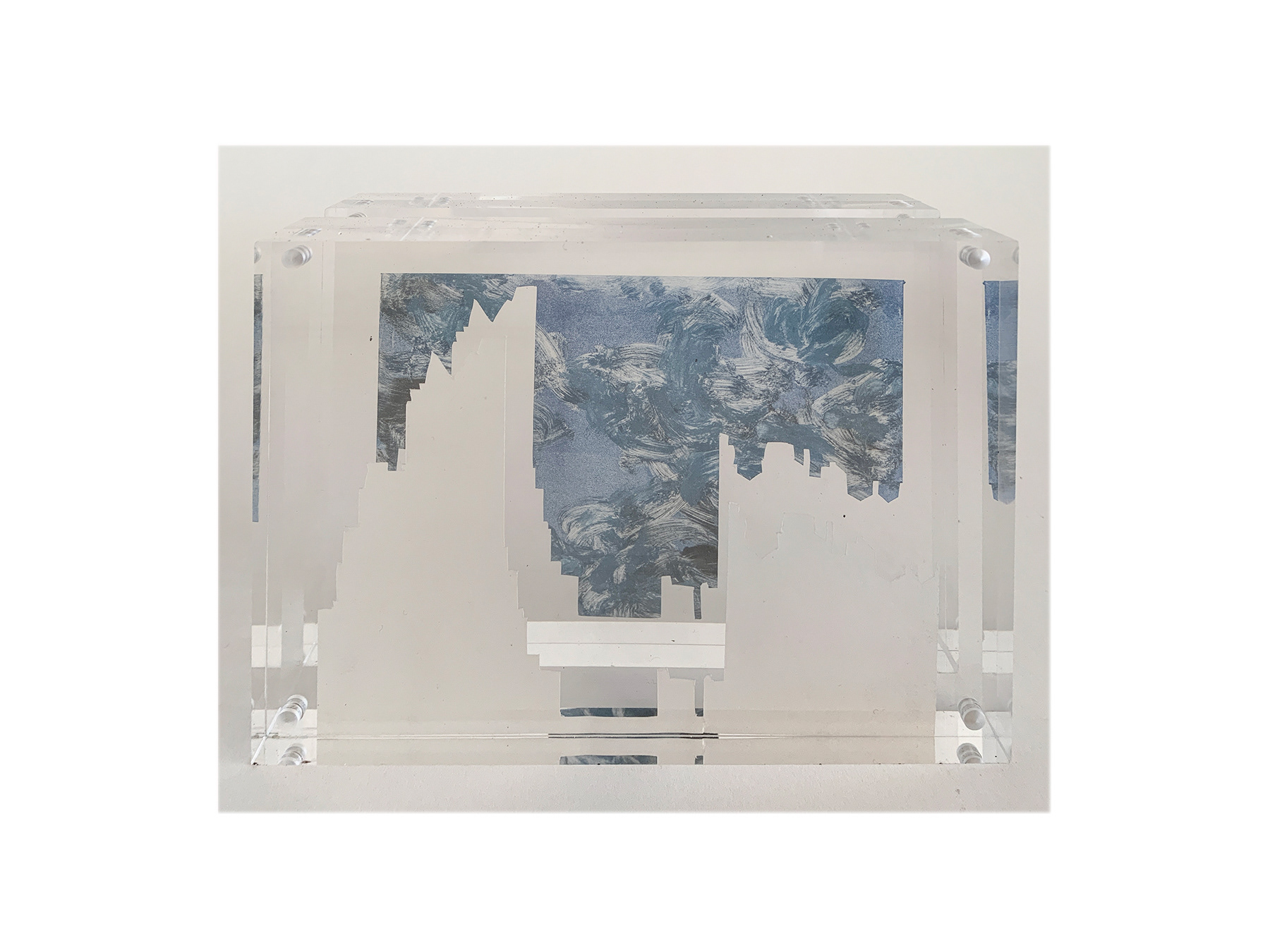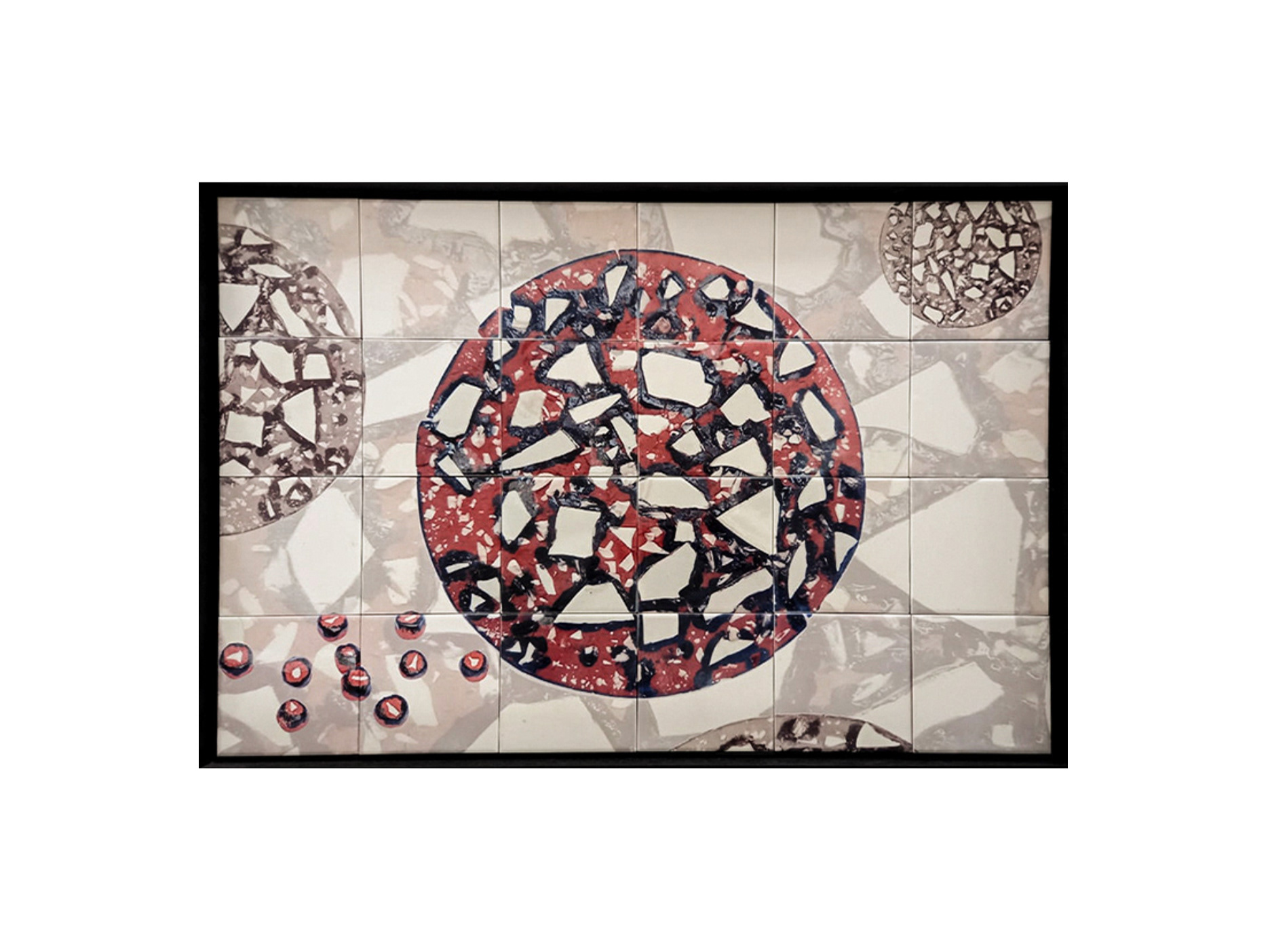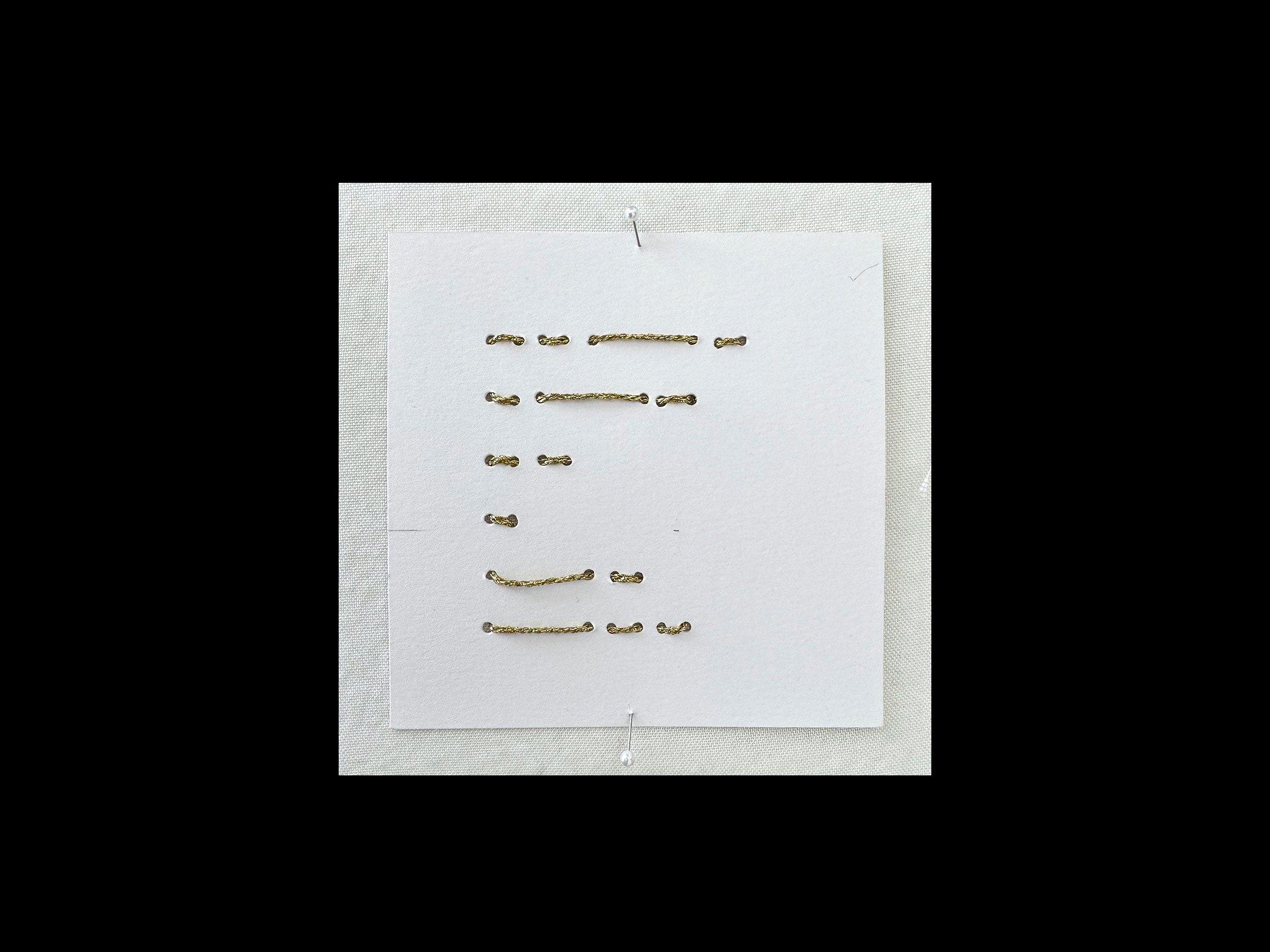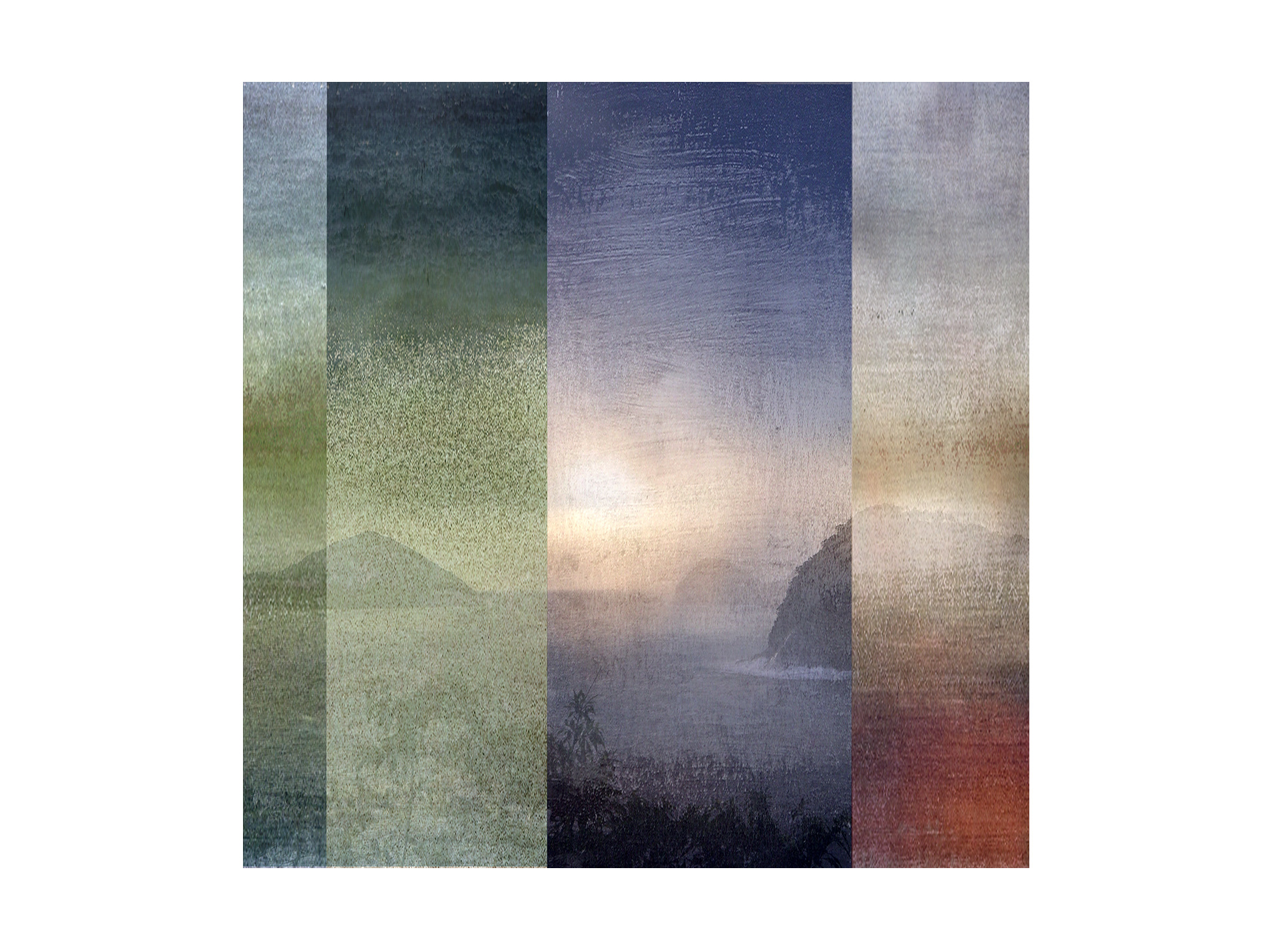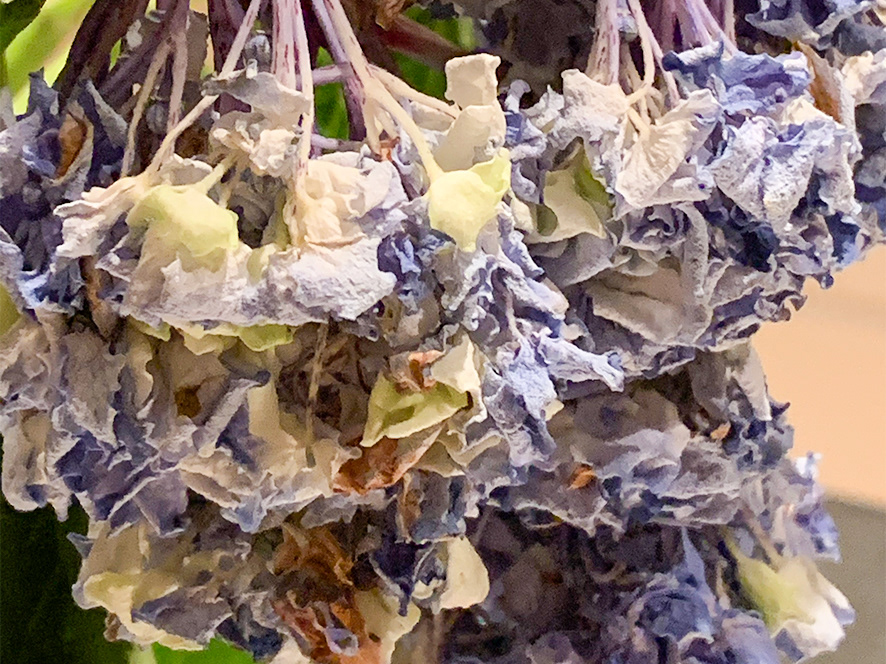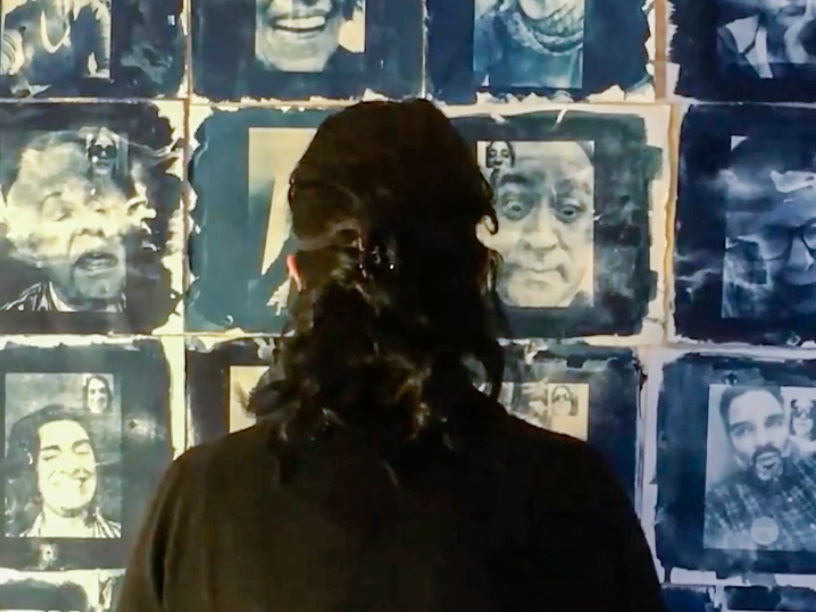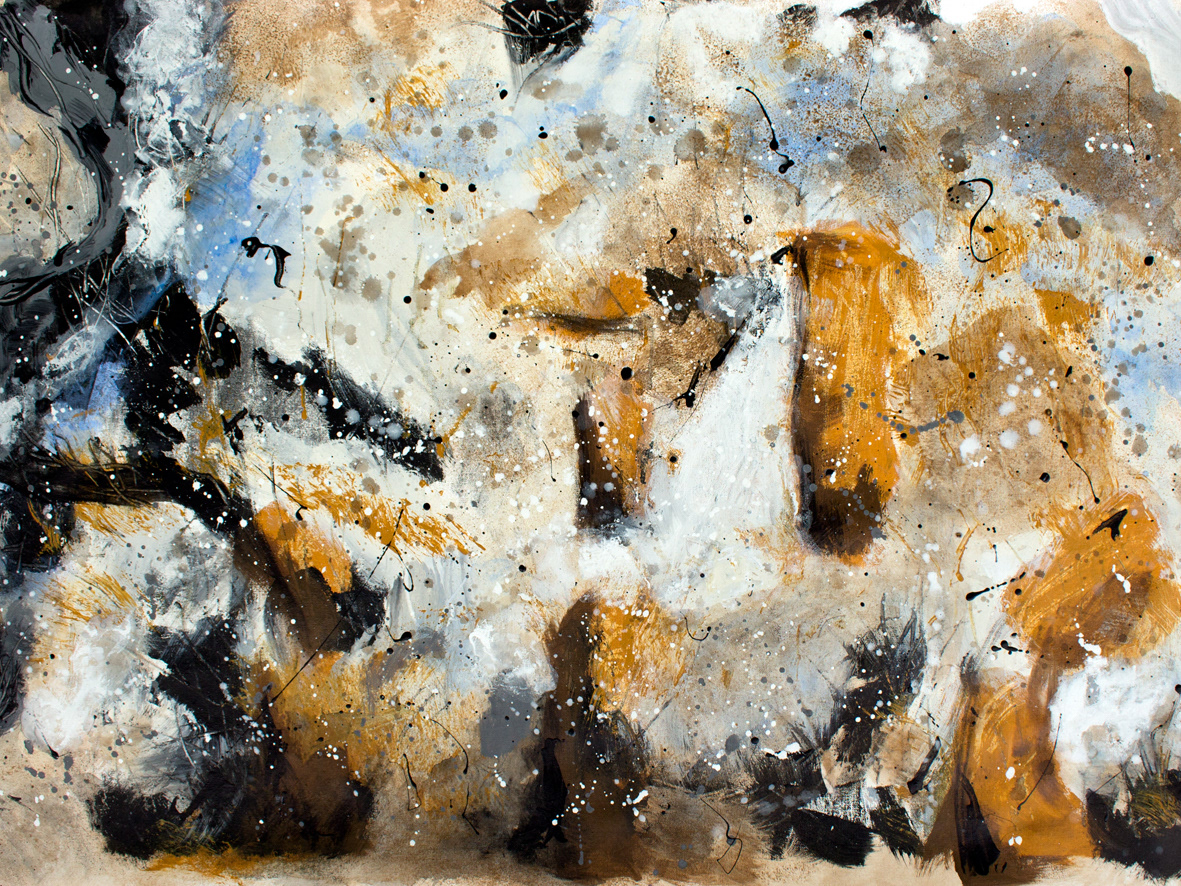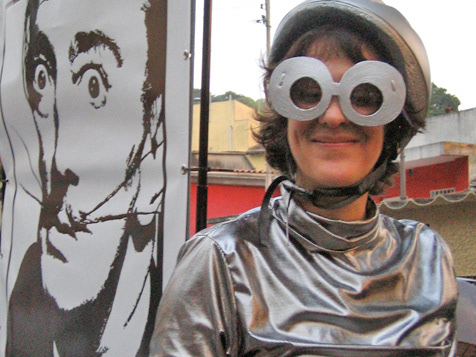GROUNDING EXPERIENCES AND HABITATIONS - Connecting with the space
DIALOGUES - Connections with others
SOME WORDS
Nature does not belong to us; we are part of it."
"Traverse under a falling sky" is a visual manifesto that echoes the alert of Yanomami chief Davi Kopenawa, leader and representative of an indigenous people from Brazil, about the crisis humanity faces. Inspired by the work "The Falling Sky: Words of a Yanomami Shaman" transcribed by French anthropologist Bruce Albert, this artwork establishes a powerful dialogue between two cultures. Together we strengthen each other. Just like the friendship and collaboration between Davi Kopenawa and Bruce Albert resulted in the work that inspires "Traverse under a falling sky", as artists from M.A.L.A. invited to present our work in France alongside local artists, we establish a collaboration pact between both countries, contributing to the strengthening of the alliance between them.
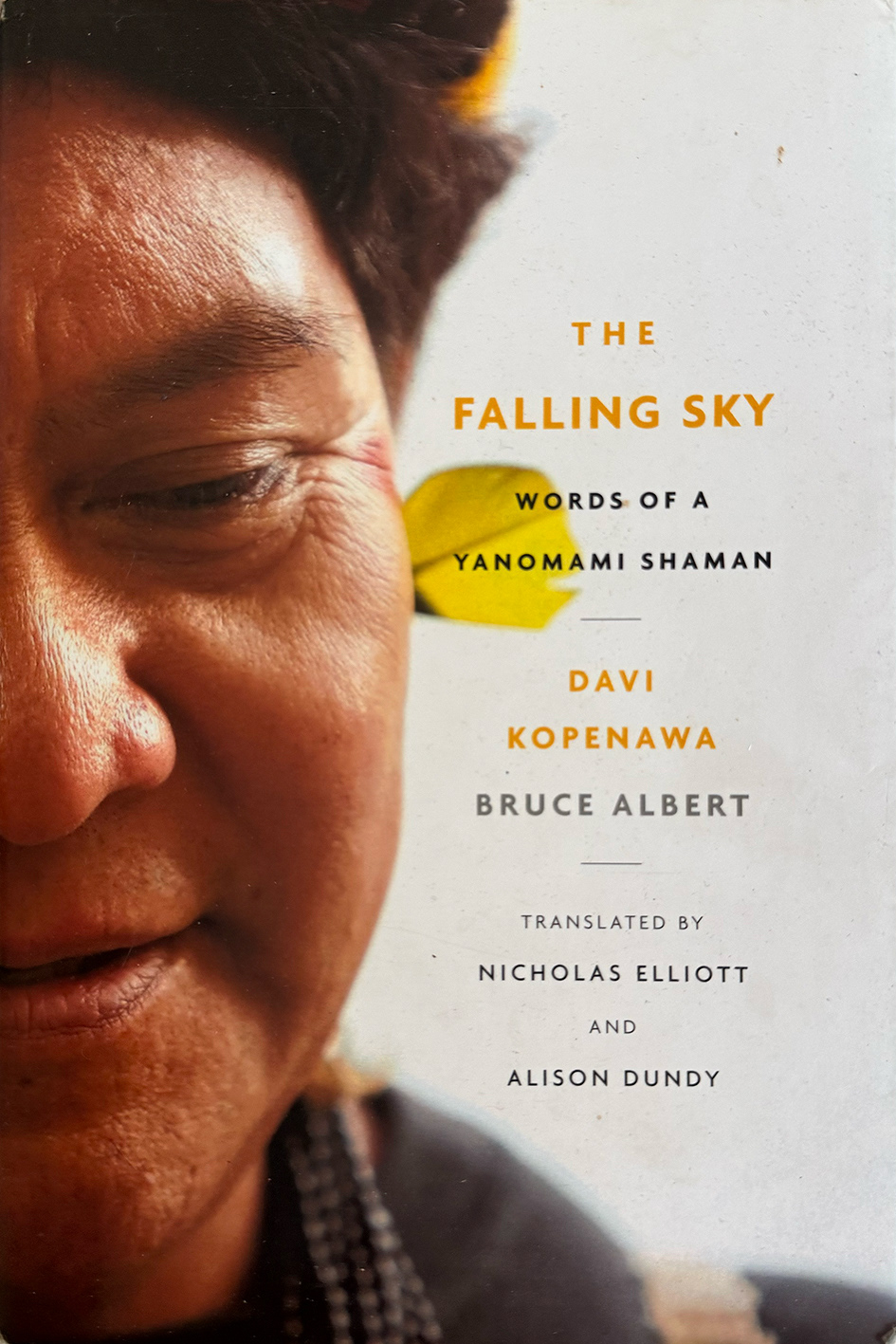
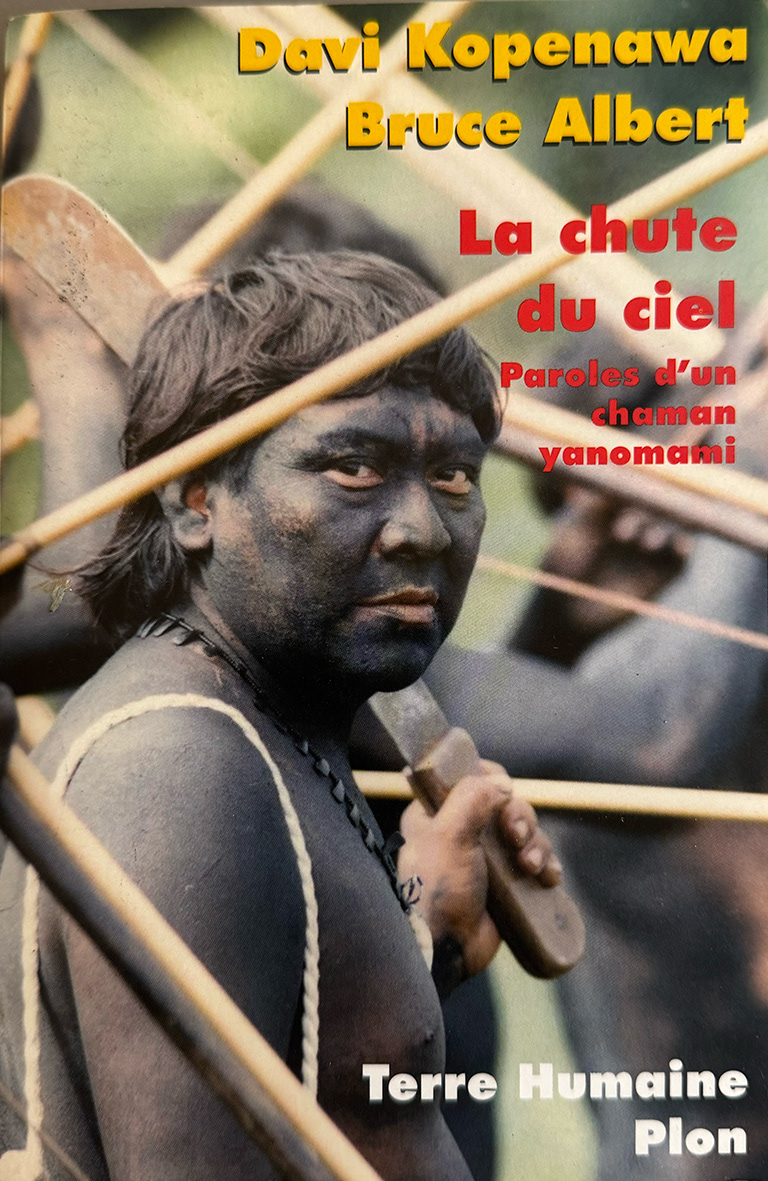
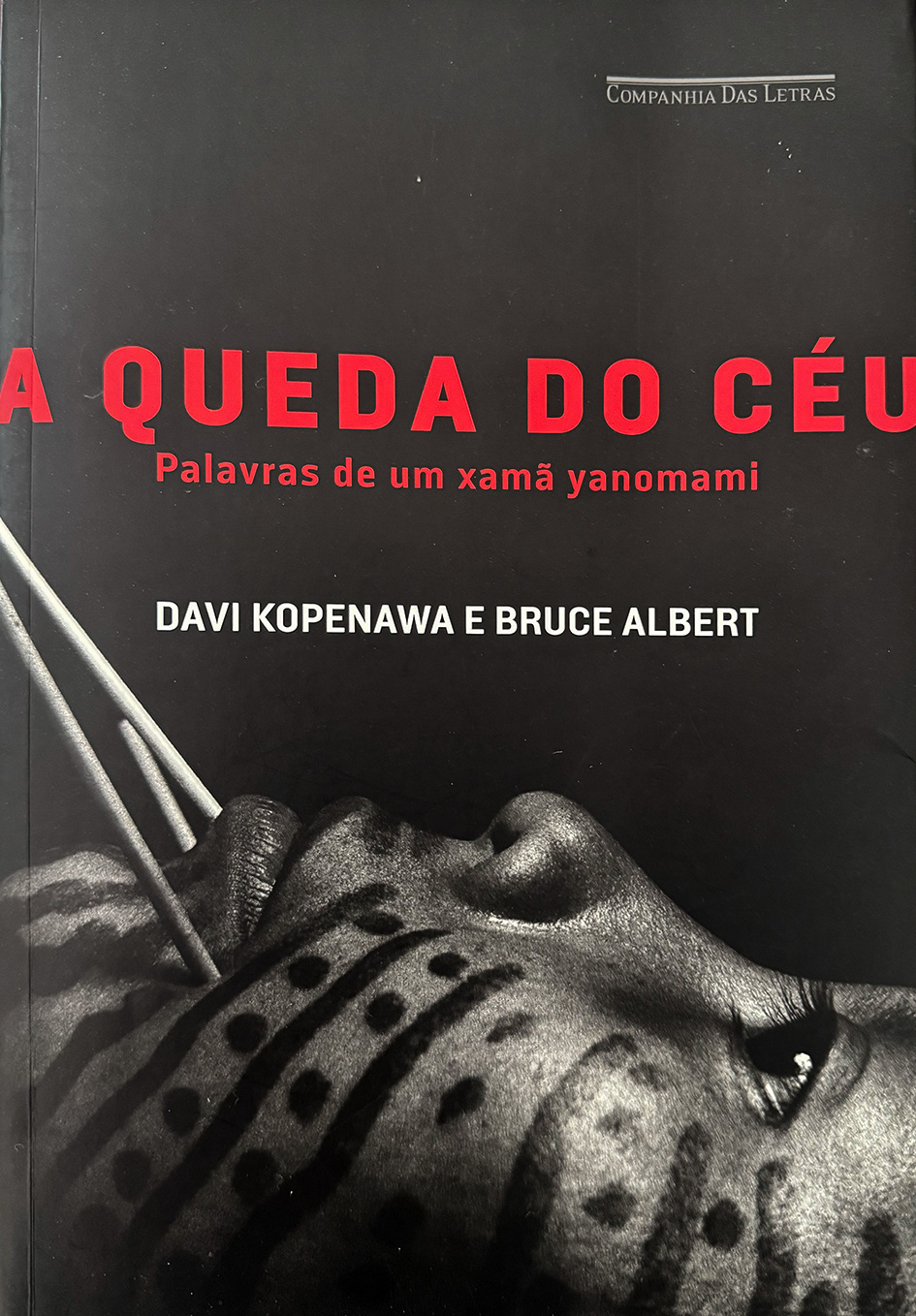
AUDIOS
Voice: Monique Allain / Text: Extracts from the book “The Falling Sky: Words of a Yanomami Shaman” by Bruce Albert and Davi Kopenawa Yanomami.
Voix: Monique Allain / Extraits du livre « La chute du ciel : Paroles d’un chaman yanomami » de Bruce Albert et Davi Kopenawa Yanomami.
TRAVERSE BENEATH A FALLING SKY 1
20 paintings with India ink on thermal paper are gathered in a Dragon Scale binding.
Book glued between wooden panels and cotton canvas, both painted with acrylic paint.
Cover made with wooden panels painted with acrylic paint.
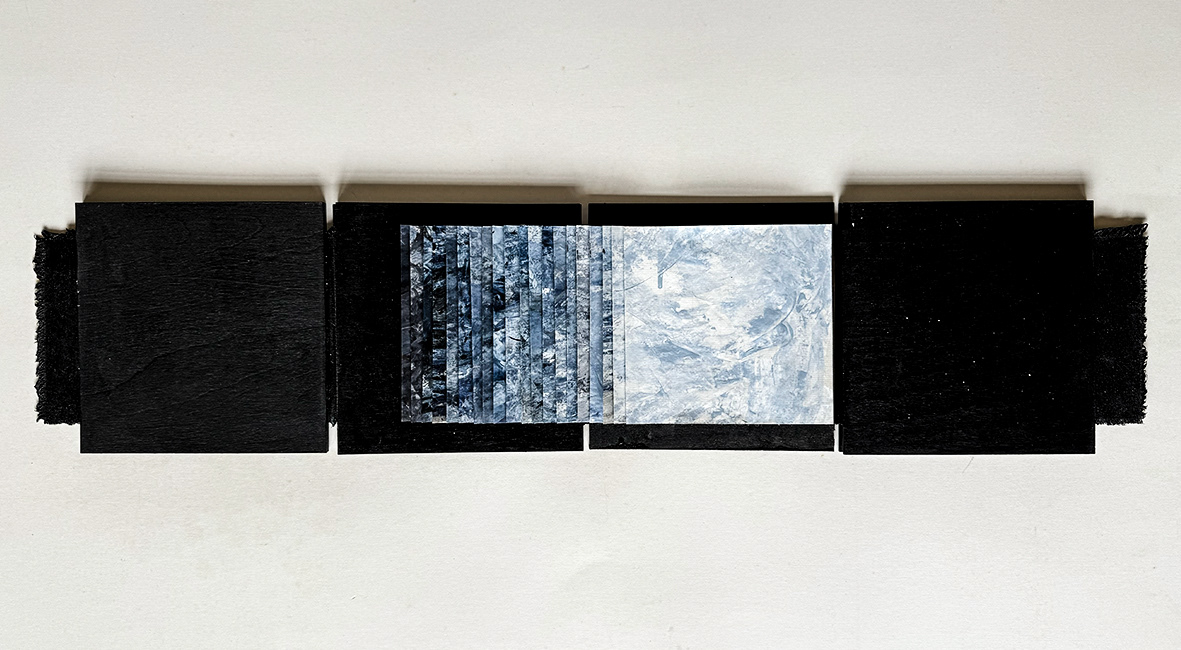
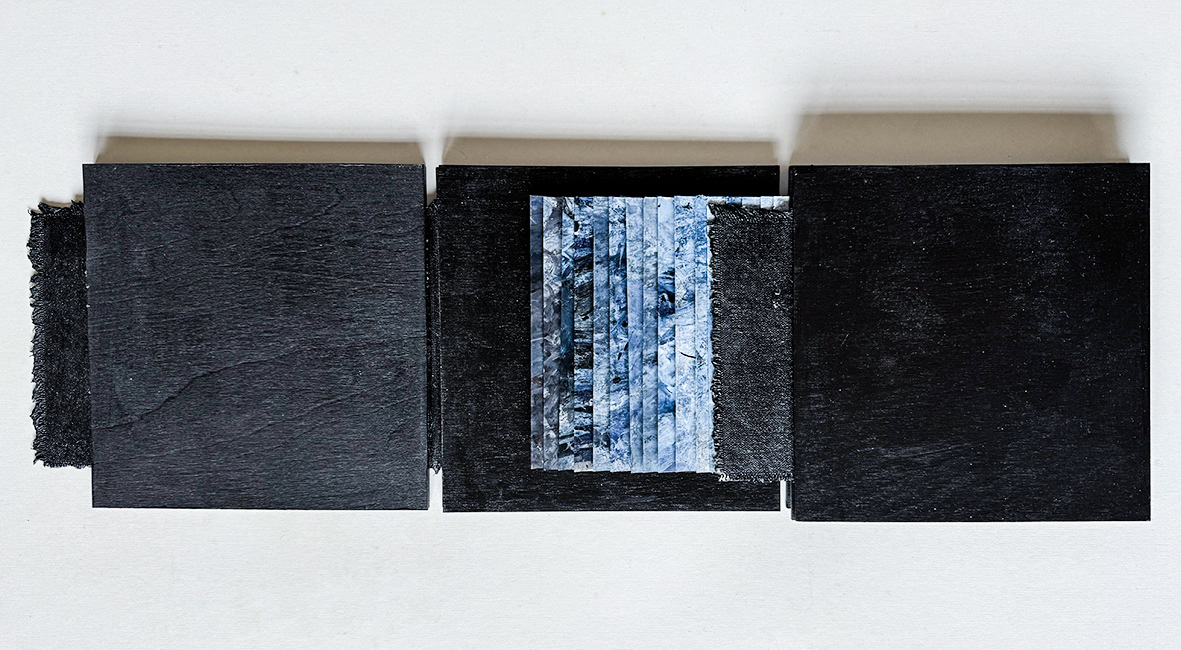
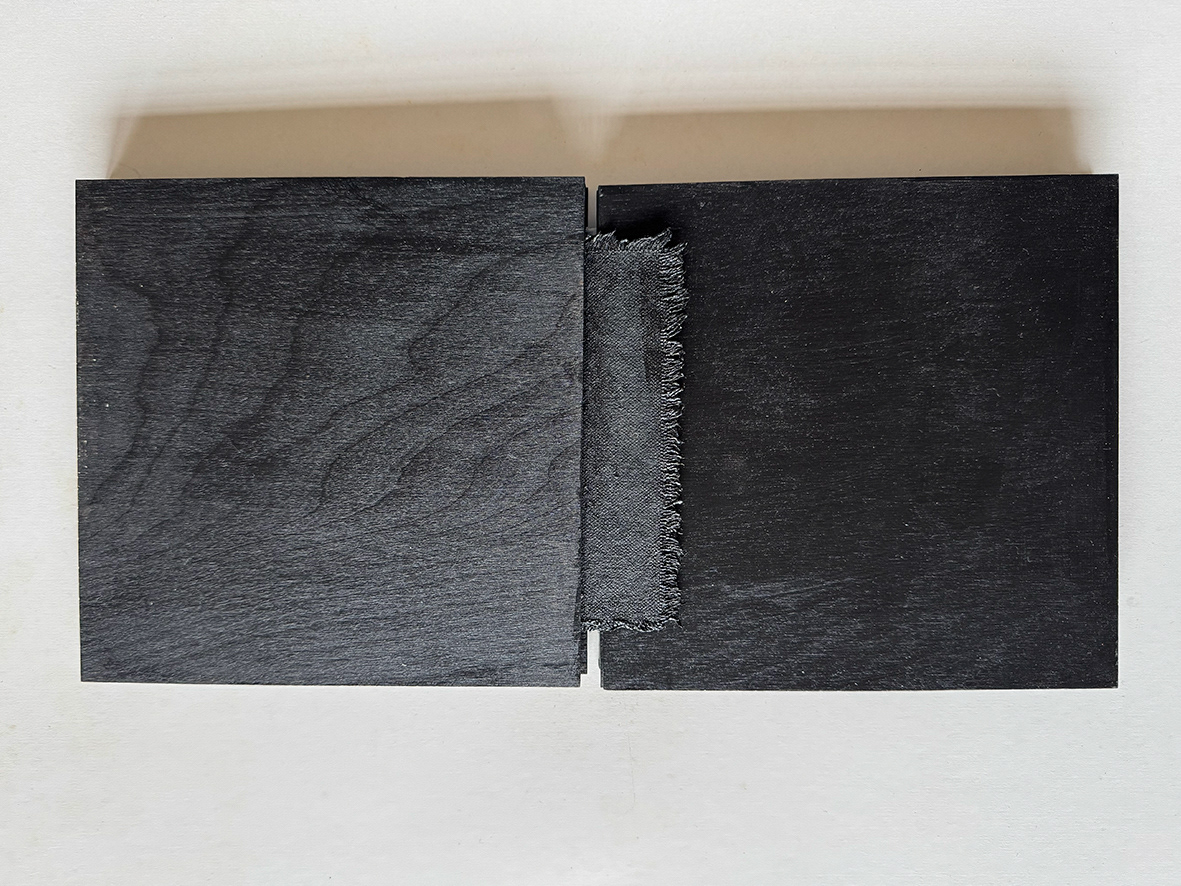
Traverse beneath a falling sky 1
Closed format: 8 x 16 x 1 in
Opened format: 8 x 31.5 x 3/8 in
Packaged format: 8 ¼ x 16 ¼ 1 ½ in
20 pages
Cover: wood panels covered with acrylic paint
Contents: India ink paintings on thermal paper
Materials: India ink, thermal paper, wood panels, cotton canvas, acrylic gel, acrylic paint
Technique: painting, mixed media, Dragon Scale book binding
Packaging: work wrapped in felt inside a satin bag
Waccabuc, NY, USA
2025
Edition 1/2
TRAVERSE BENEATH A FALLING SKY 2
8 square sheets of thick paper with a square cutout in the middle have a letter in Morse code embroidered with cotton crochet thread on the top. The thread ends are loose on both sides of the sheets. The set of letters forms the word "traverse". The sheets are placed on 8 marble card holders and arranged in sequence to form a straight line. A cord with 8 cotton crochet threads gathered passes through the cutouts of the 8 cards. 3 small plastic bottles painted with acrylic paint are standing near the set.
Traverse beneath a falling sky 2 (English version), 2025, video performance, 4'32".
Traversée sous un ciel en chute 2 (version en français), 2025, vidéo performance, 3"56".
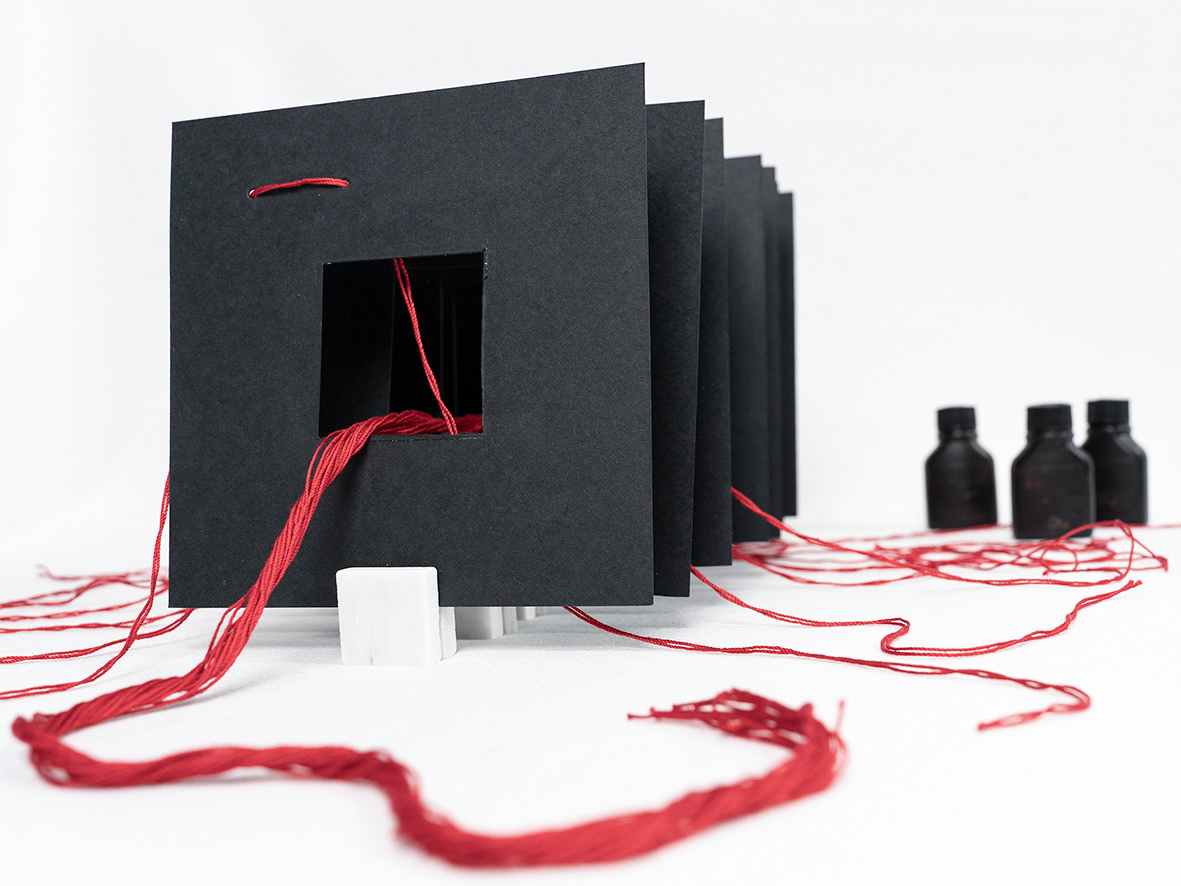
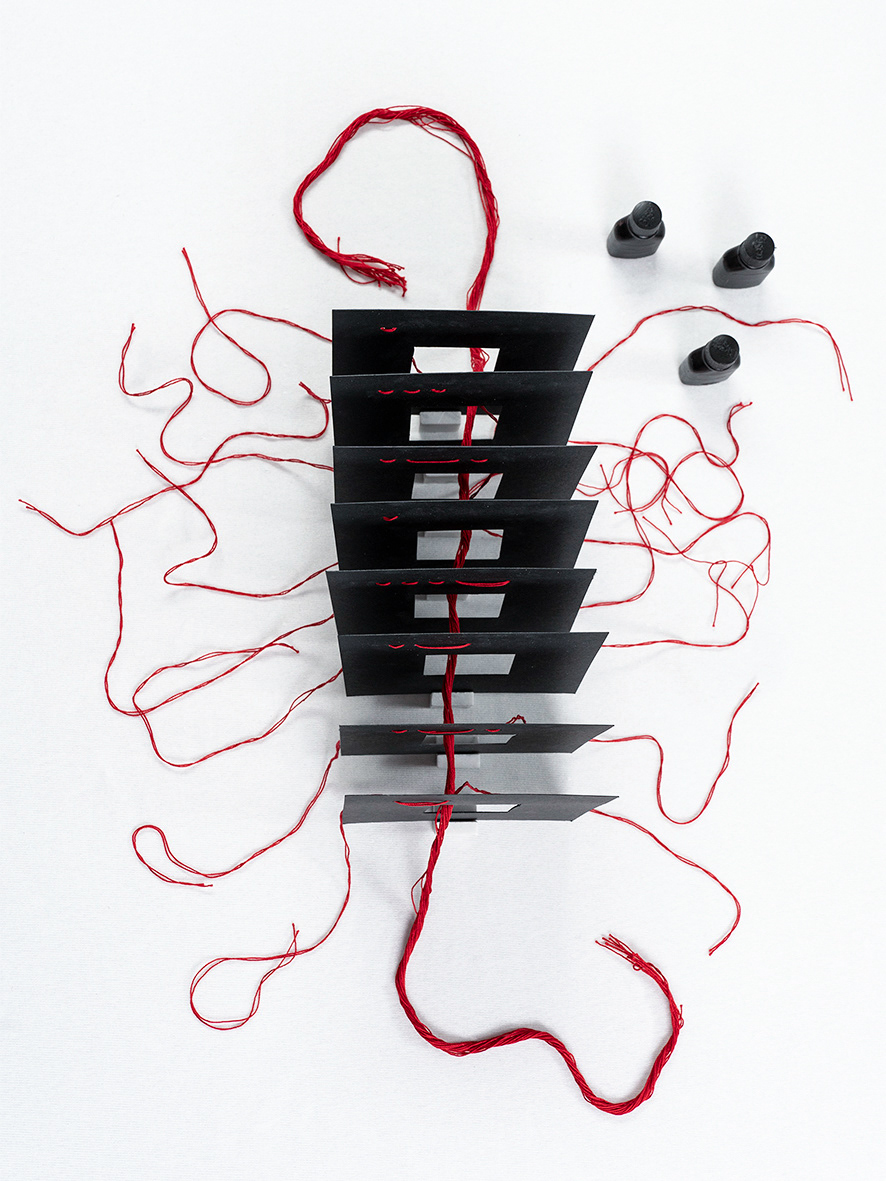
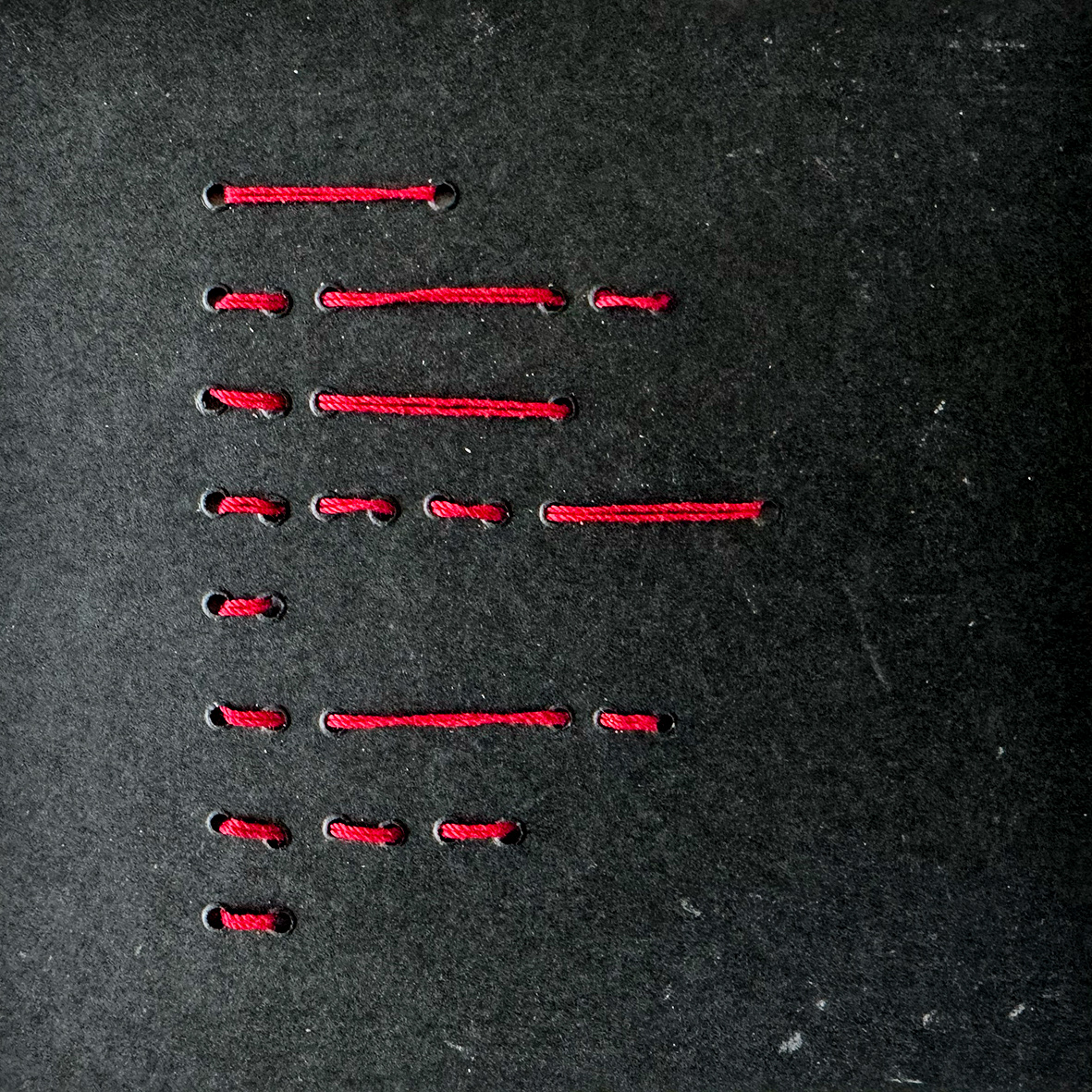
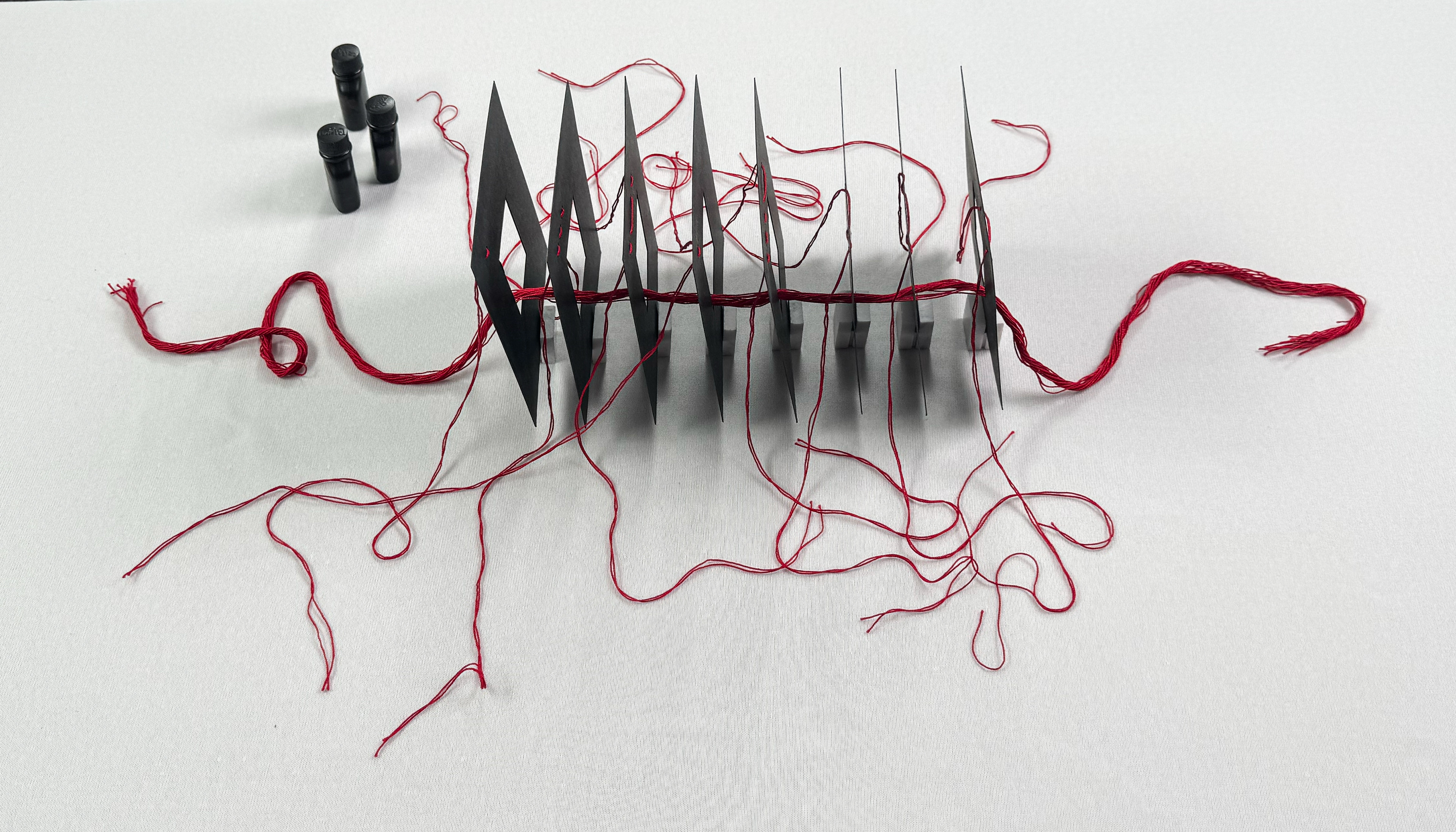
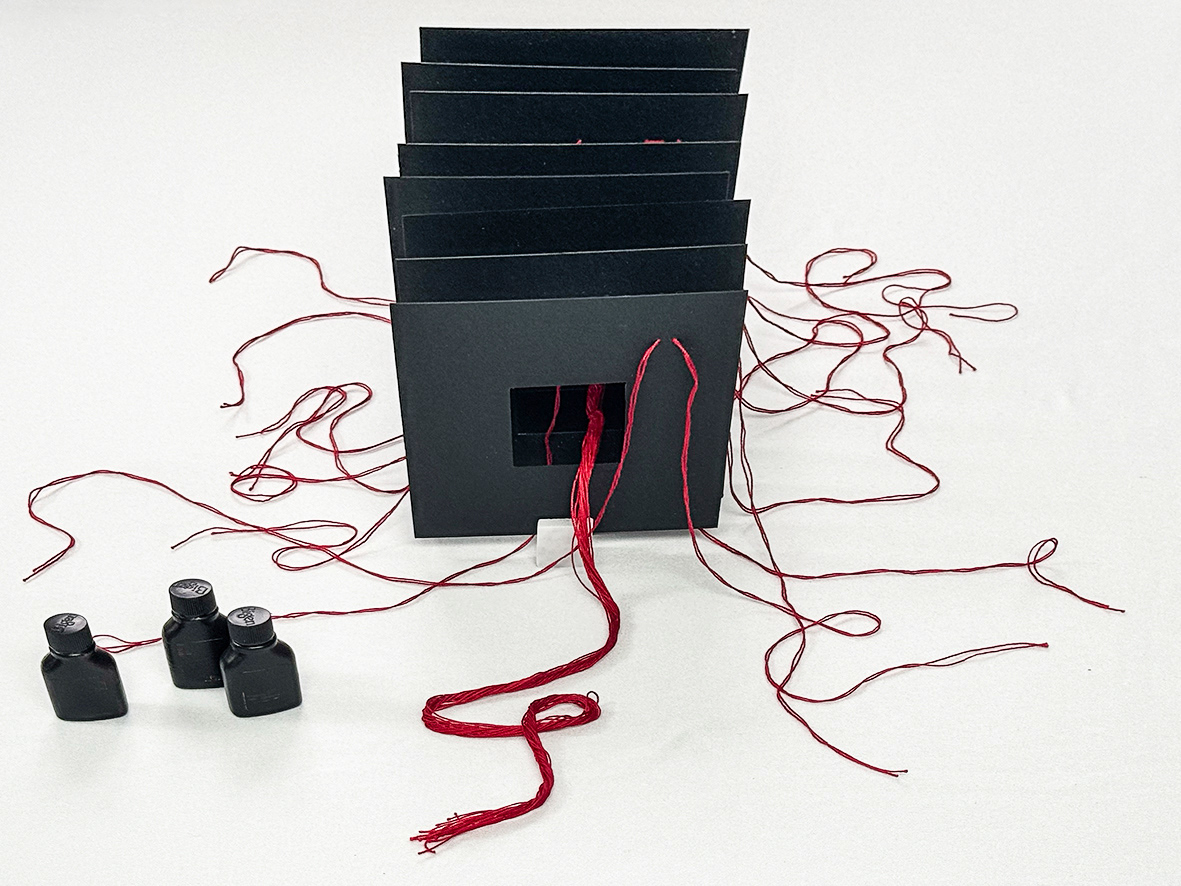
Traverse beneath a falling sky 2
Mounted format: 6 x 31 ½ x 16 ½ in
Packaged format: 6 ½ x 6 ½ x 2 ¾ in.
Pages: 8 (paper cutouts)
Materials: thick paper cutouts, cotton crochet threads, marble card holders, recycled small plastic bottles, wooden dowel, acrylic paint
Writing: Morse code letters embroidered with cotton crochet thread. The set of letters forms the word “traverse”.
Technique: Small-scale installation. The assembly of the work constitutes a performance.
Packaging: velvet bag with components wrapped in felt inside a wooden box painted with acrylic paint. Acrylic cover.
Waccabuc, NY, EUA
2025
Edition 4/4
TRAVERSE BENEATH A FALLING SKY 3
8 paintings with India ink on square sheets of thick paper with a square cutout in the middle have on the top a letter in Morse code embroidered with cotton crochet thread. The thread ends are loose on both sides of the sheets. The set of letters forms the word "traverse". The sheets are placed on 8 marble card holders and arranged in sequence to form a straight line. A cord with 8 cotton crochet threads gathered passes through the cutouts of the 8 cards. 3 small plastic bottles painted with acrylic paint are standing near the set.
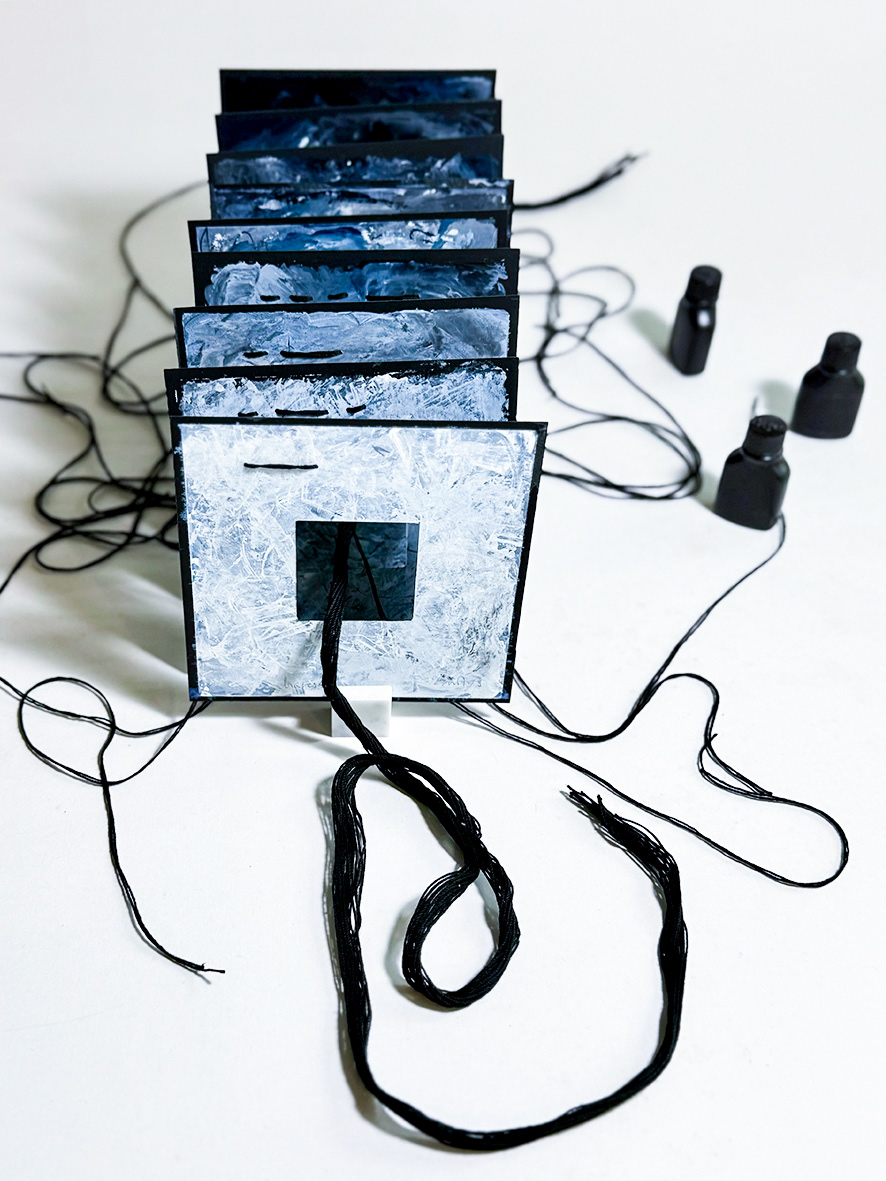
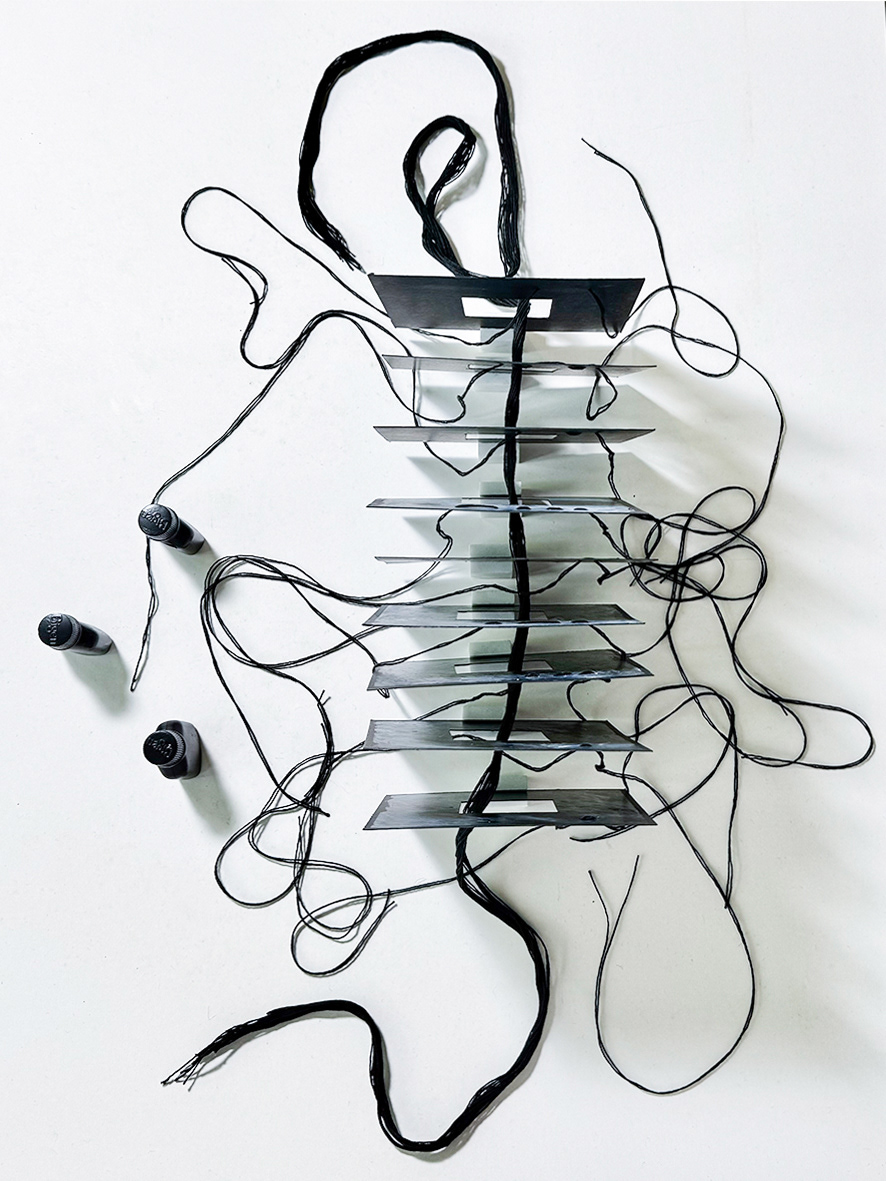
Traverse beneath a falling sky 3 (English version), 2025, video performance, 4'37".
Traversée sous un ciel en chute 3 (version en français), 2025, vidéo performance, 4"03"
Traverse beneath a falling sky 3
Mounted format: 6 x 31 ½ x 16 ½ in
Packaged format: 6 ½ x 6 ½ x 2 ¾ in.
Pages: 8 (paper cutouts)
Materials: India ink, thick paper cutouts, cotton crochet threads, marble card holders, recycled small plastic bottles, wooden dowel, acrylic paint
Writing: Morse code letters embroidered with cotton crochet thread. The set of letters forms the word “traverse”.
Technique: Small-scale installation. The assembly of the work constitutes a performance.
Packaging: velvet bag with components wrapped in felt inside a wooden box painted with acrylic paint. Acrylic cover.
Waccabuc, NY, EUA
2025
Edition 1/2
TRAVERSE BENEATH A FALLING SKY 4
A wooden box, painted with acrylic paint and attached to the wall from the back, holds a waxed cotton thread and wood beads to which 16 cutouts of India ink paintings on thick paper are attached (cutouts discarded during the production of the two editions of vol. 3 of the same series). A small wooden stick secures the line to the box, keeping the painting cutouts hanging and suspended in a vertical sequence. On the bottom of the box, a wooden panel painted with India ink displays the word "traverse", embroidered in Morse code with cotton crochet thread. A stone, also painted with India ink, rests inside the box.
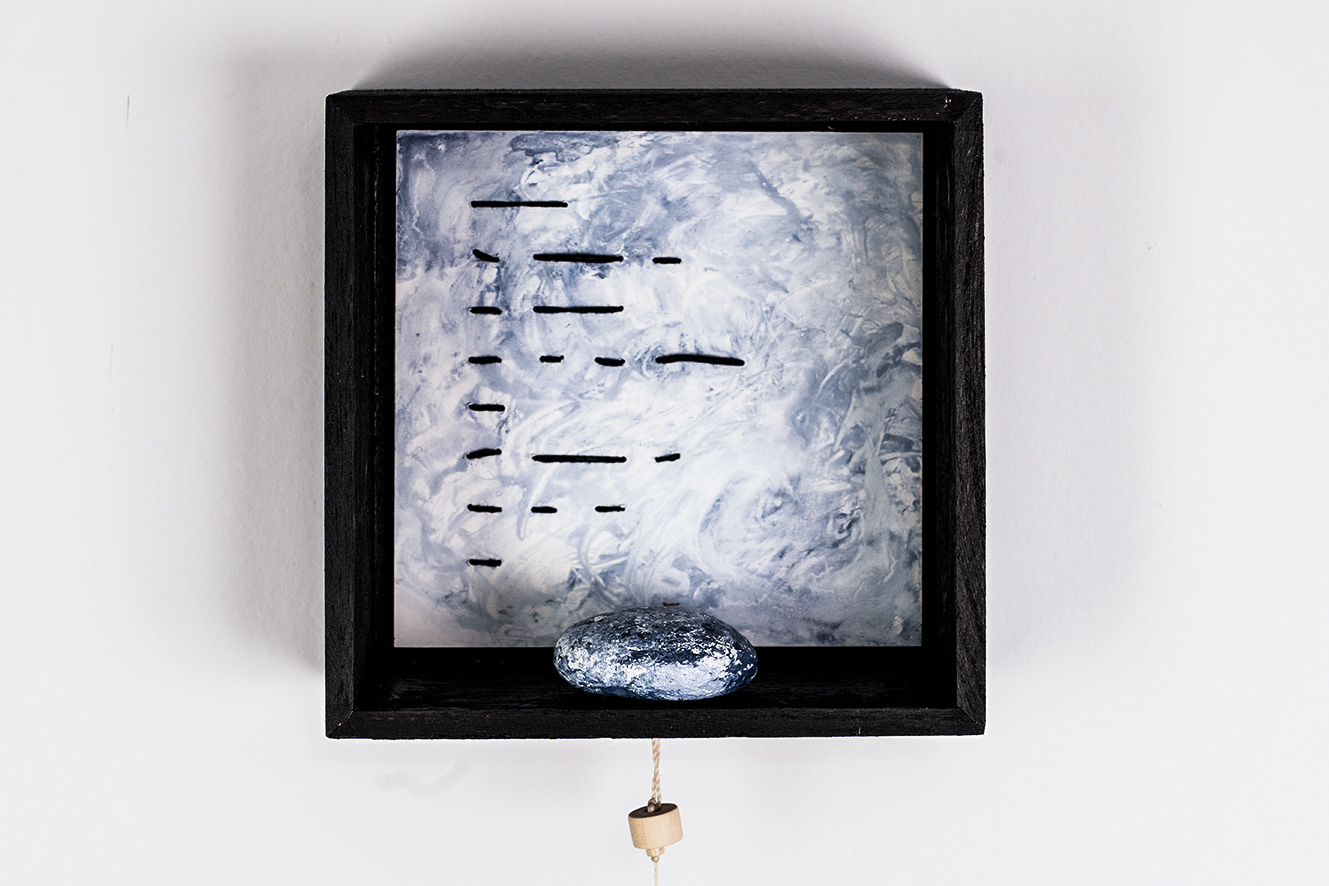
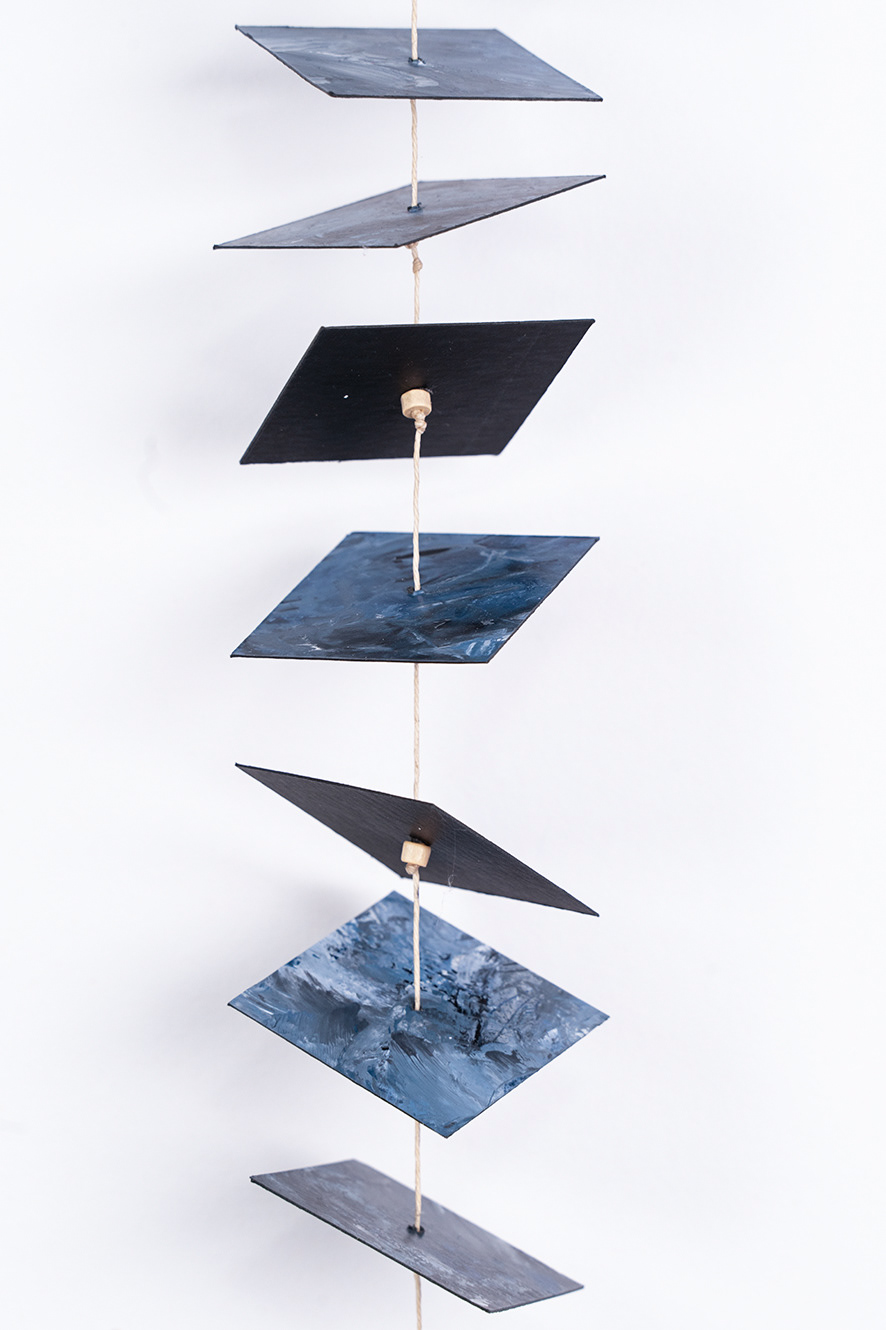
Traverse beneath a falling sky 4
Mounted format: 35 x 6 x 2 ½ in
Packaged work format: 6 ½ x 6 ½ x 2 ¾ in.
Pages: 16 (small paper cutouts)
Materials: India ink, thick paper cutouts, cotton crochet threads, wooden beads, wooden stick, stone, wooden box, wooden panel, acrylic paint
Writing: Morse code letters embroidered with cotton crochet thread to form the word “traverse”
Technique: assemblage
Packaging: velvet bag with components wrapped in felt inside a wooden box painted with acrylic paint. Acrylic cover.
Waccabuc, NY, EUA
2025
Single edition
TRAVERSE BENEATH A FALLING SKY 5
A wooden box painted with acrylic paint and attached to the wall from the back, holds a cotton thread and beads to which 13 cutouts of thick paper are attached (cutouts saved from the production of the editions of Traverse under a falling sky 2 from the same project). A small wooden stick secures the cotton thread with the cutouts to the box, keeping the cutouts hanging and suspended in a vertical sequence. On the bottom of the box, a wooden panel painted with acrylic paint displays the word "traverse", embroidered in Morse code with cotton crochet thread. A stone, also painted with acrylic paint, rests inside the box.
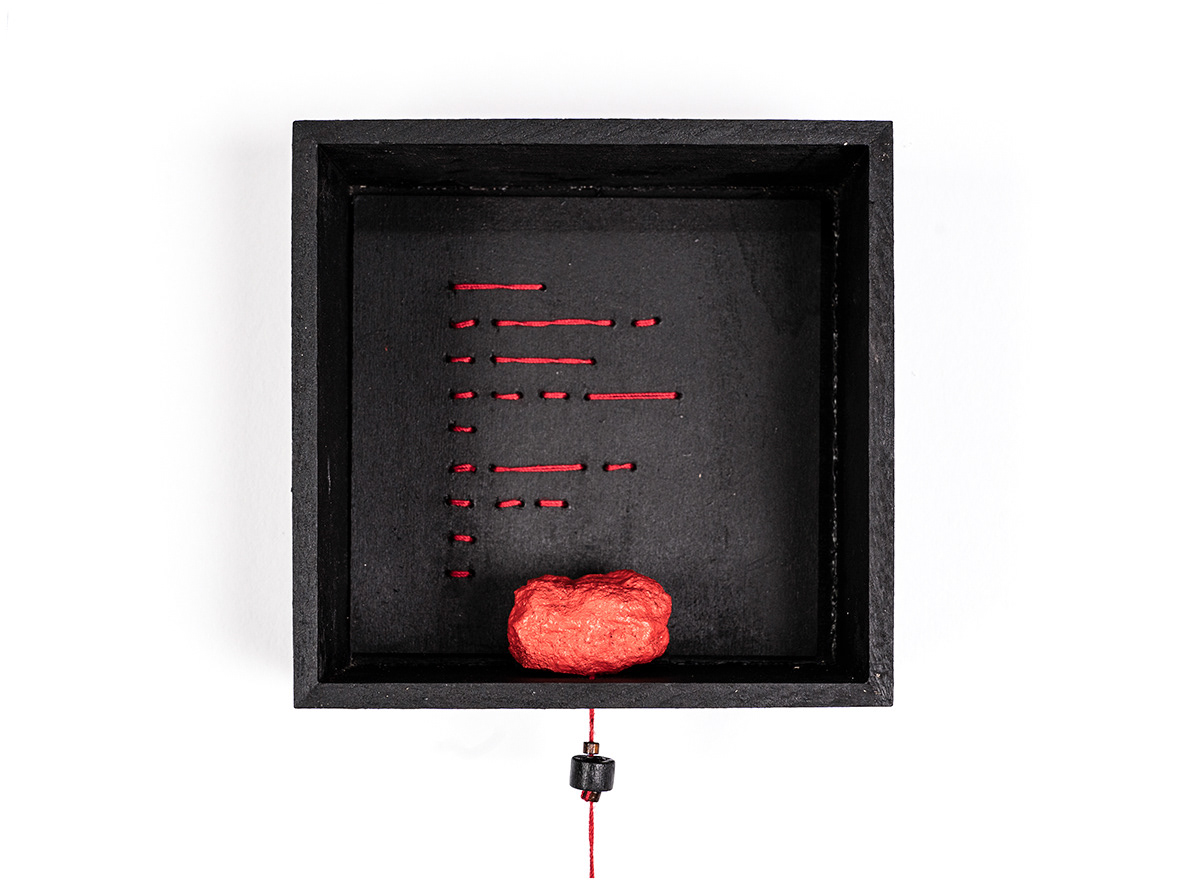
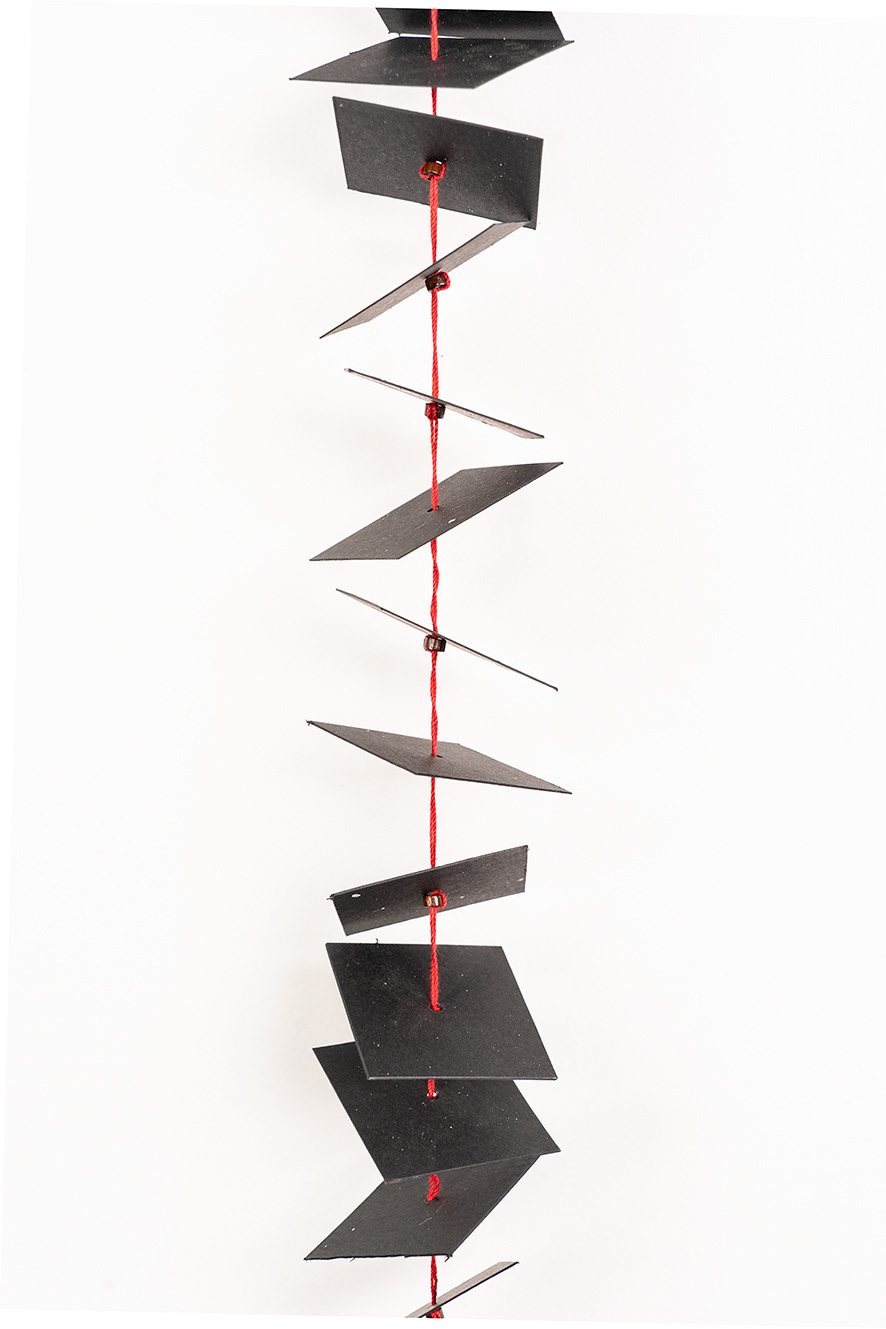
Traverse beneath a falling sky 5
Mounted format: 34 x 6 x 2 ½ in
Packaged format: 6 ½ x 6 ½ x 2 ¾ in
Pages: 13 (mini paper cutouts)
Materials: thick paper cutouts, cotton crochet threads, wooden beads, wooden stick, stone, wooden box, wooden panel, acrylic paint
Writing: Morse code letters embroidered with cotton crochet thread to form the word “traverse”
Technique: assemblage
Packaging: velvet bag with components wrapped in felt inside a wooden box painted with acrylic paint. Acrylic cover.
Waccabuc, NY, EUA
2025
Edition 3/3
SKIES
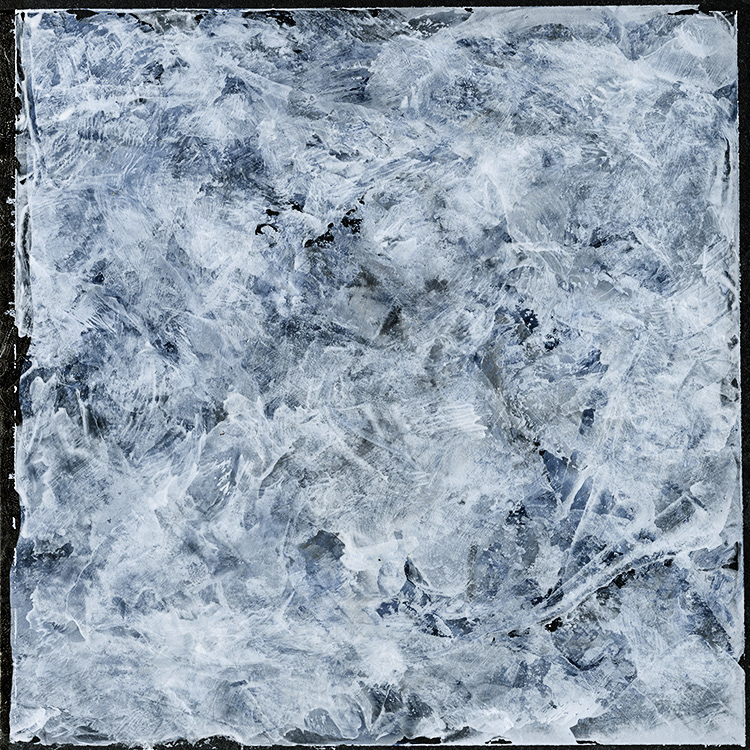
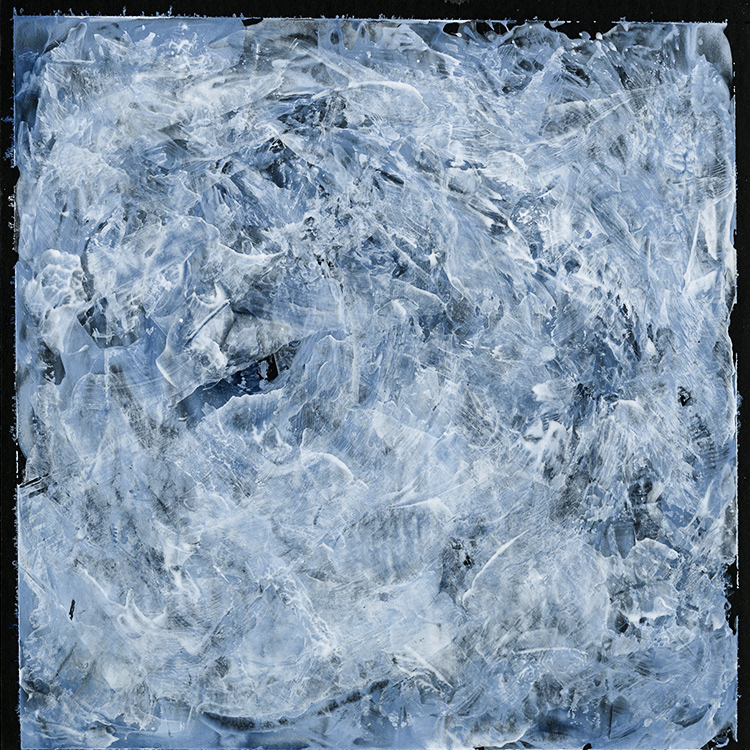
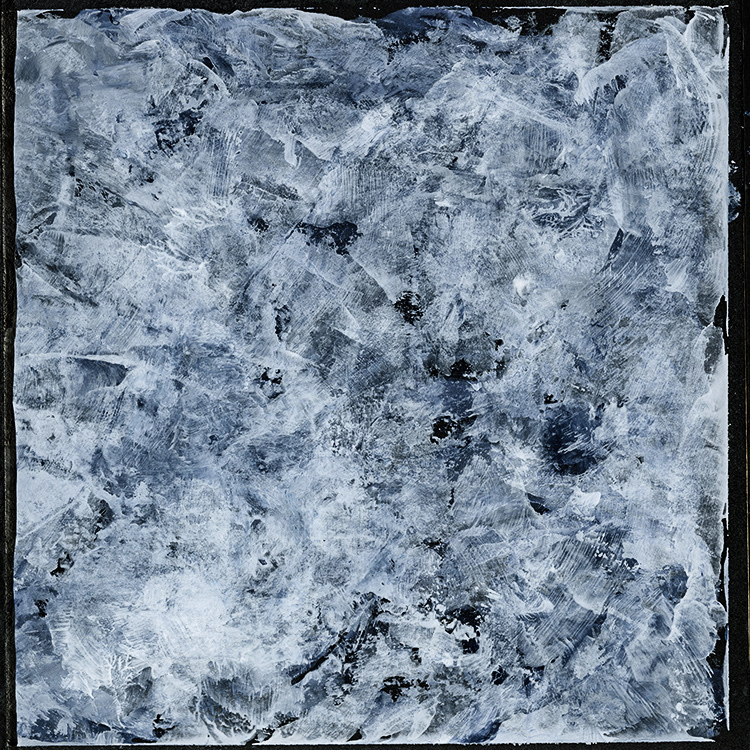
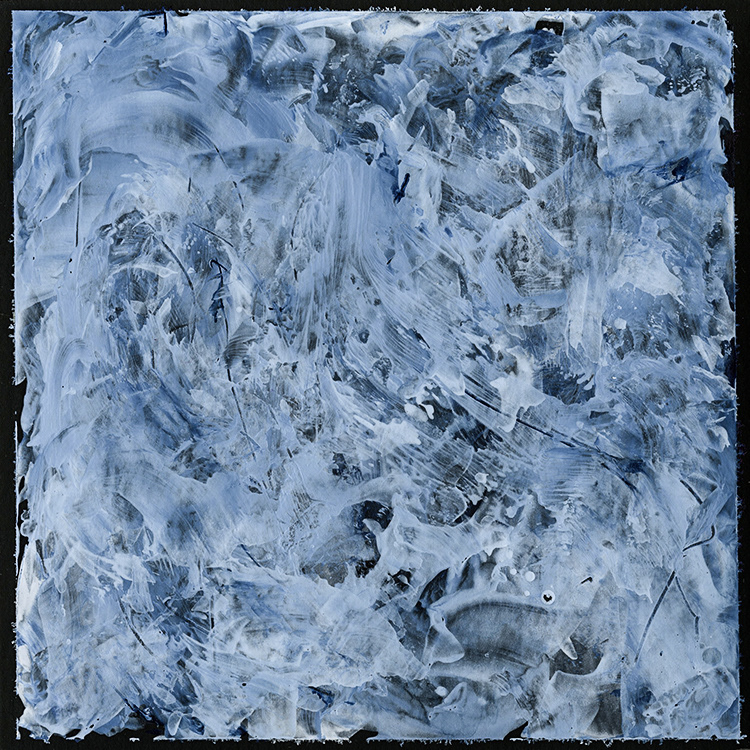
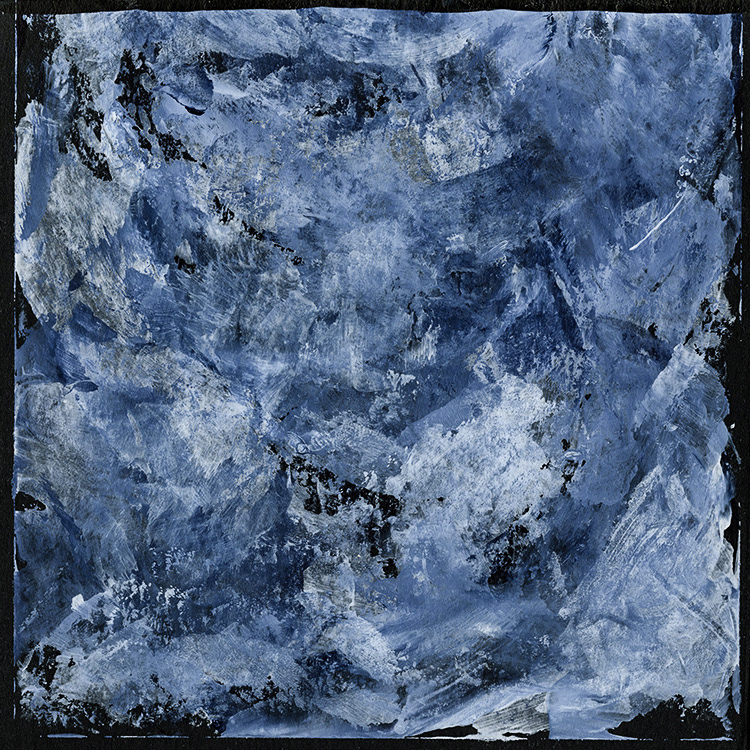
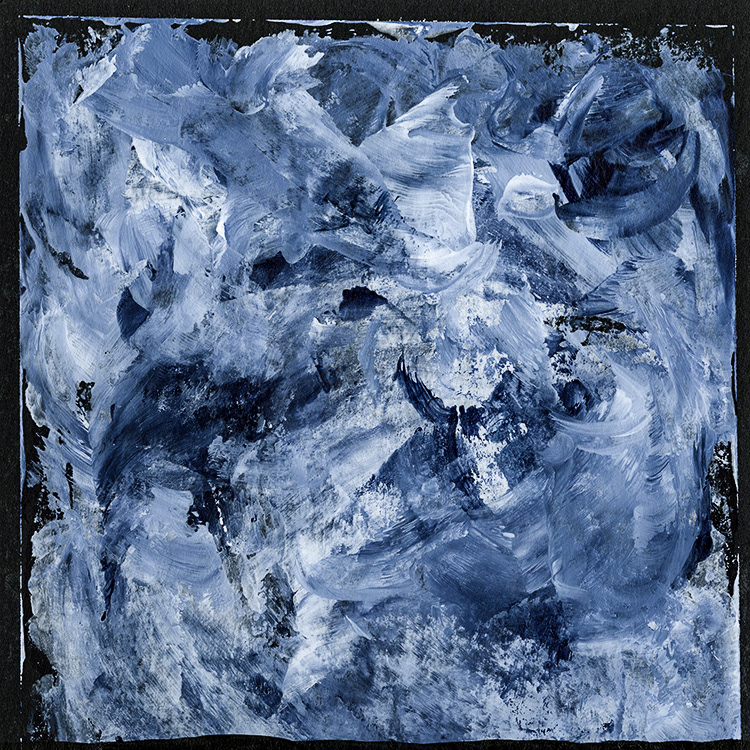

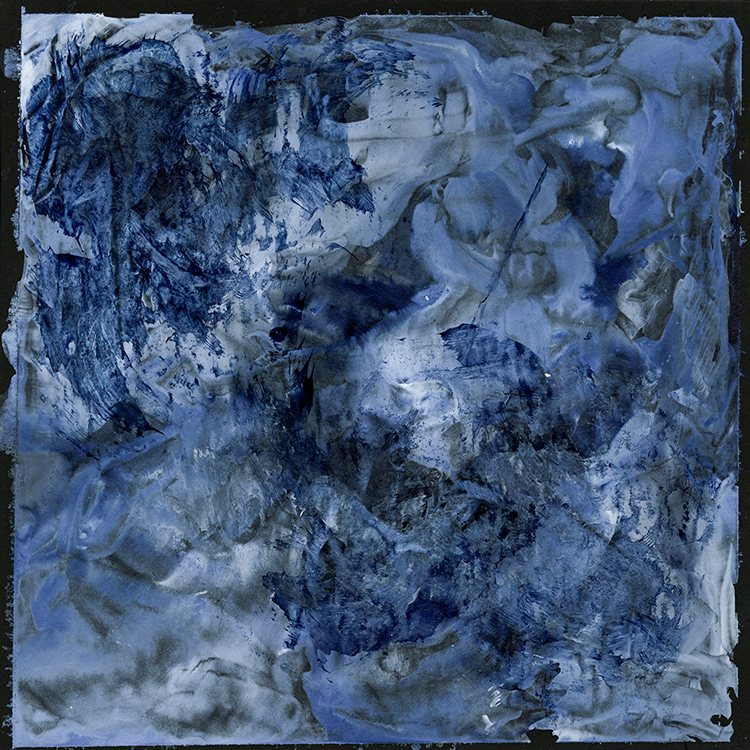
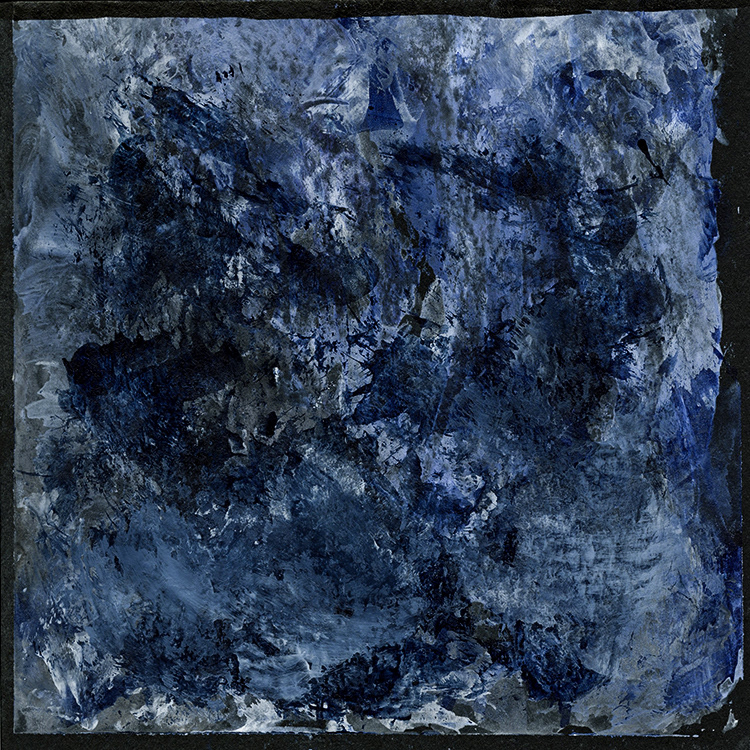
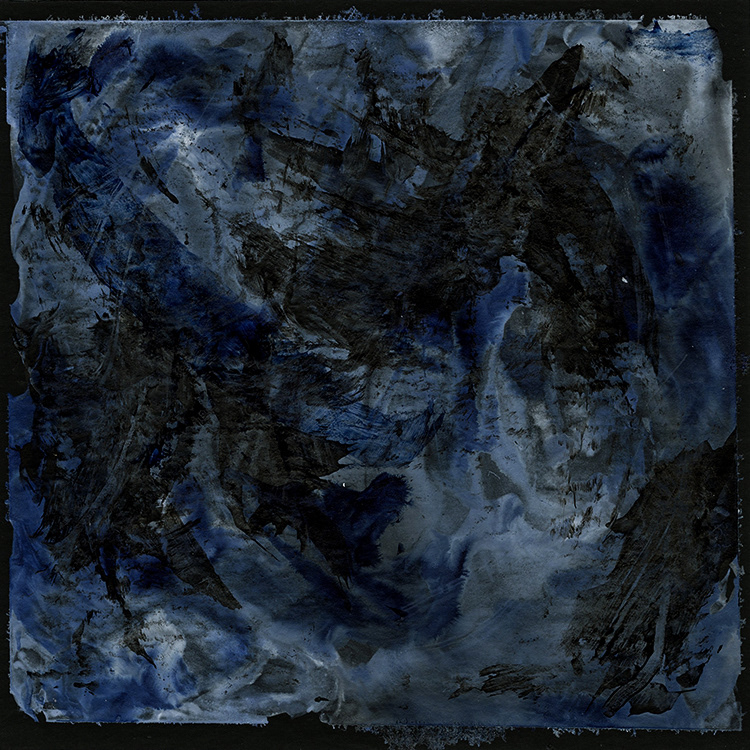
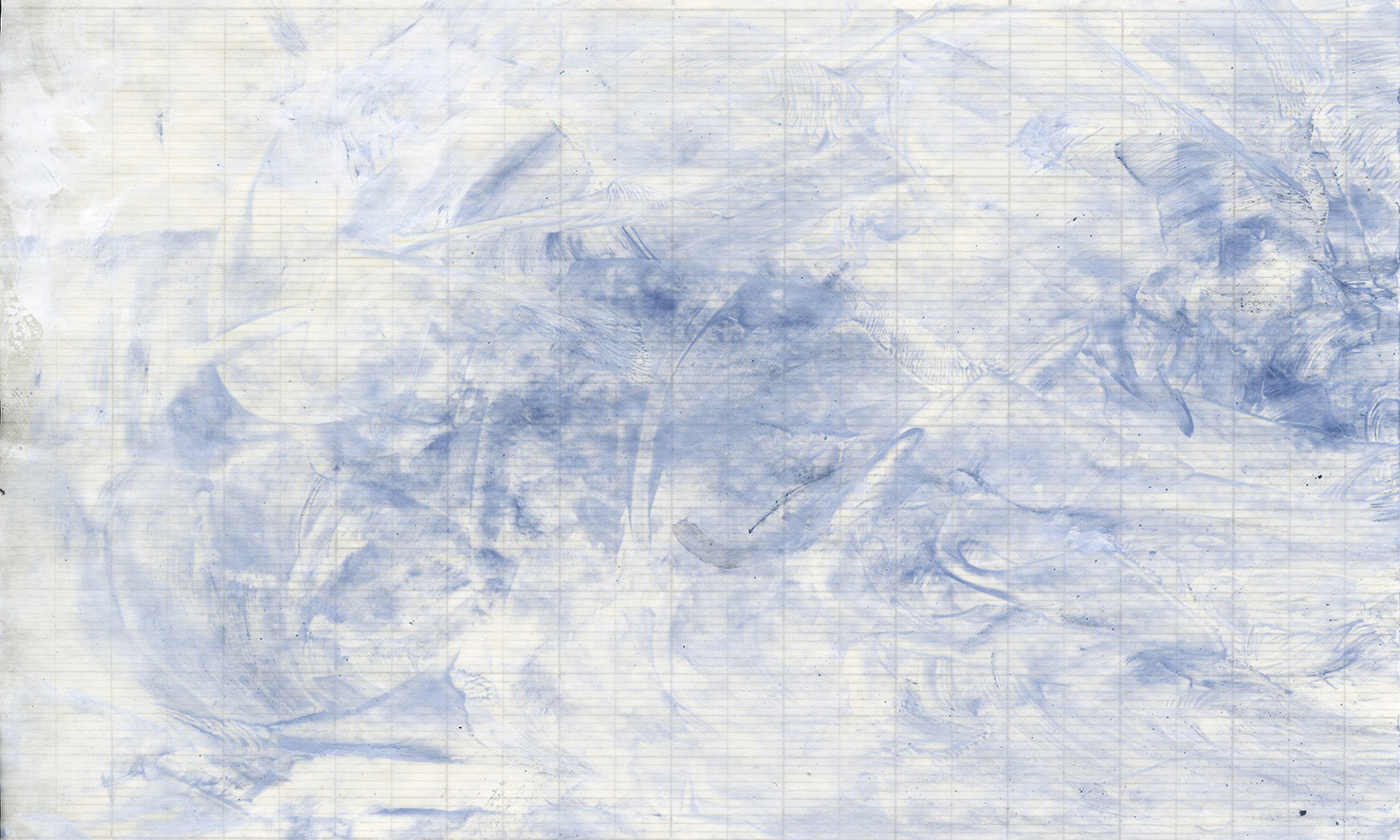
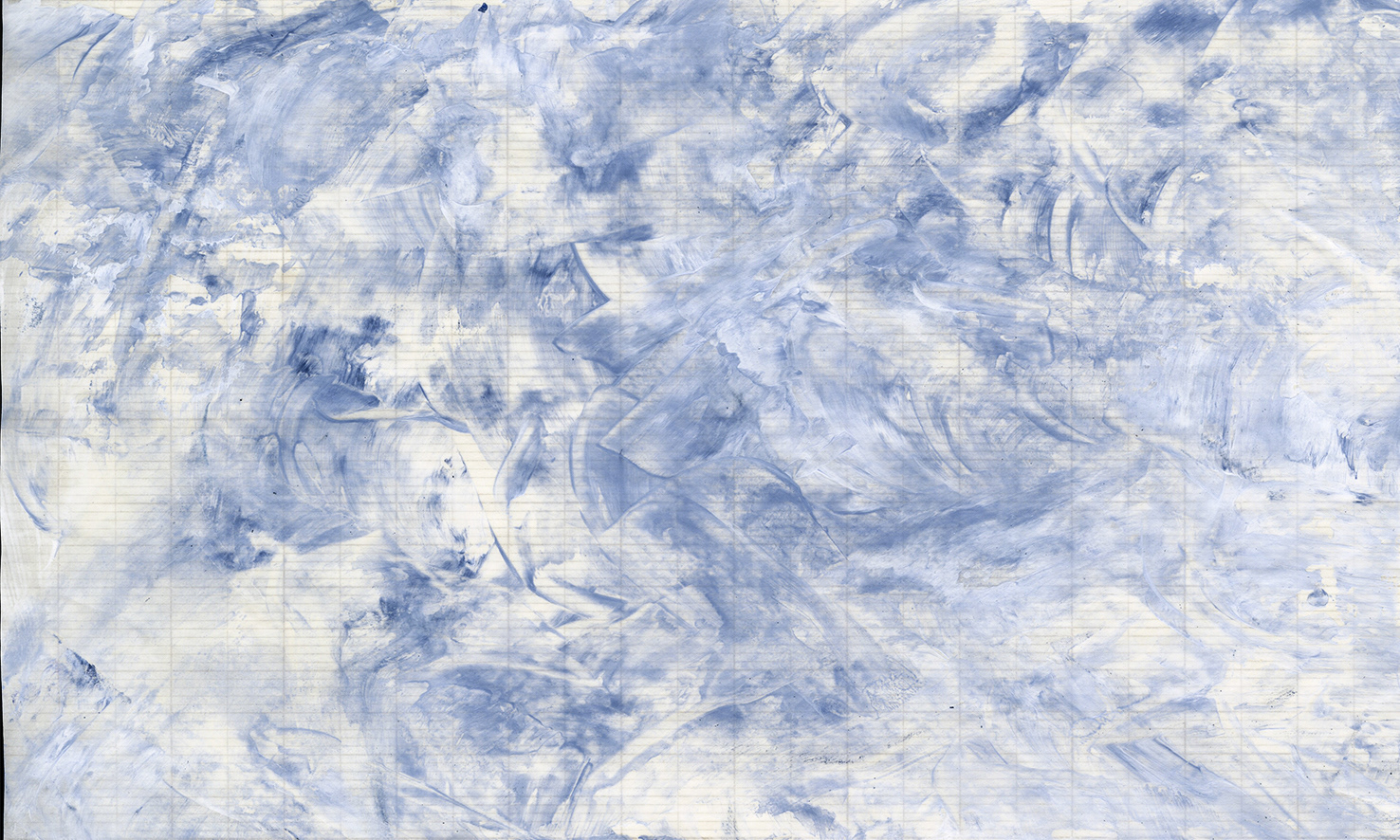
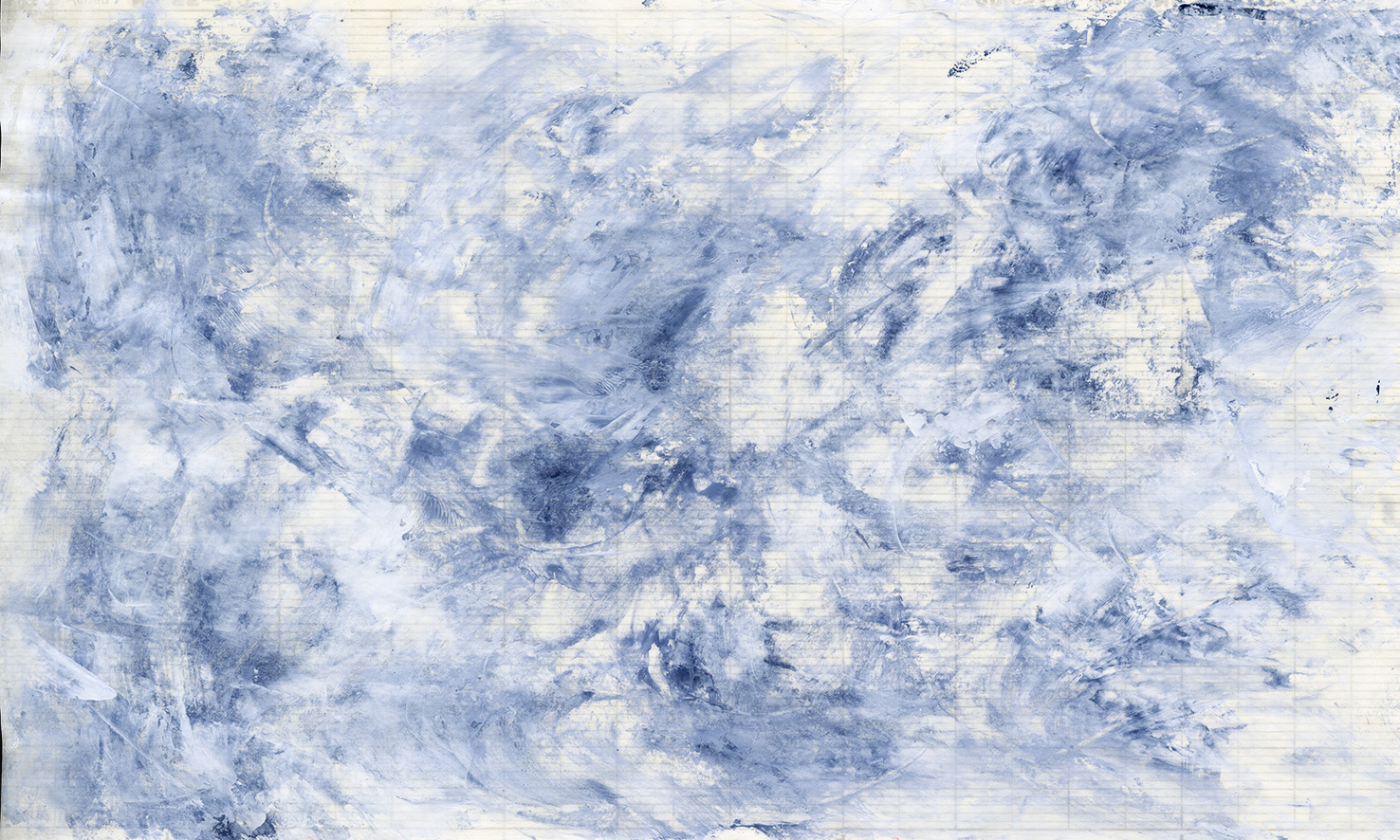

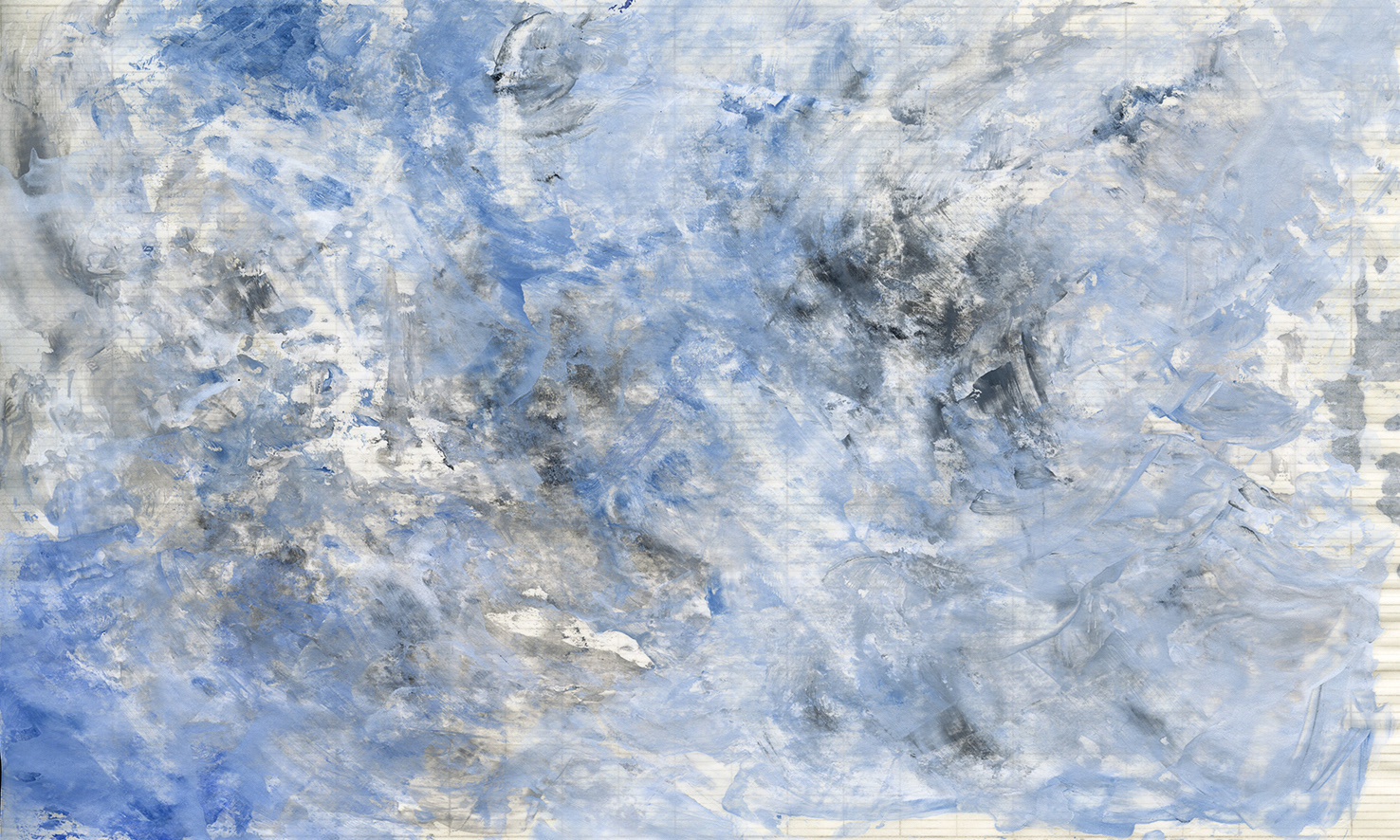
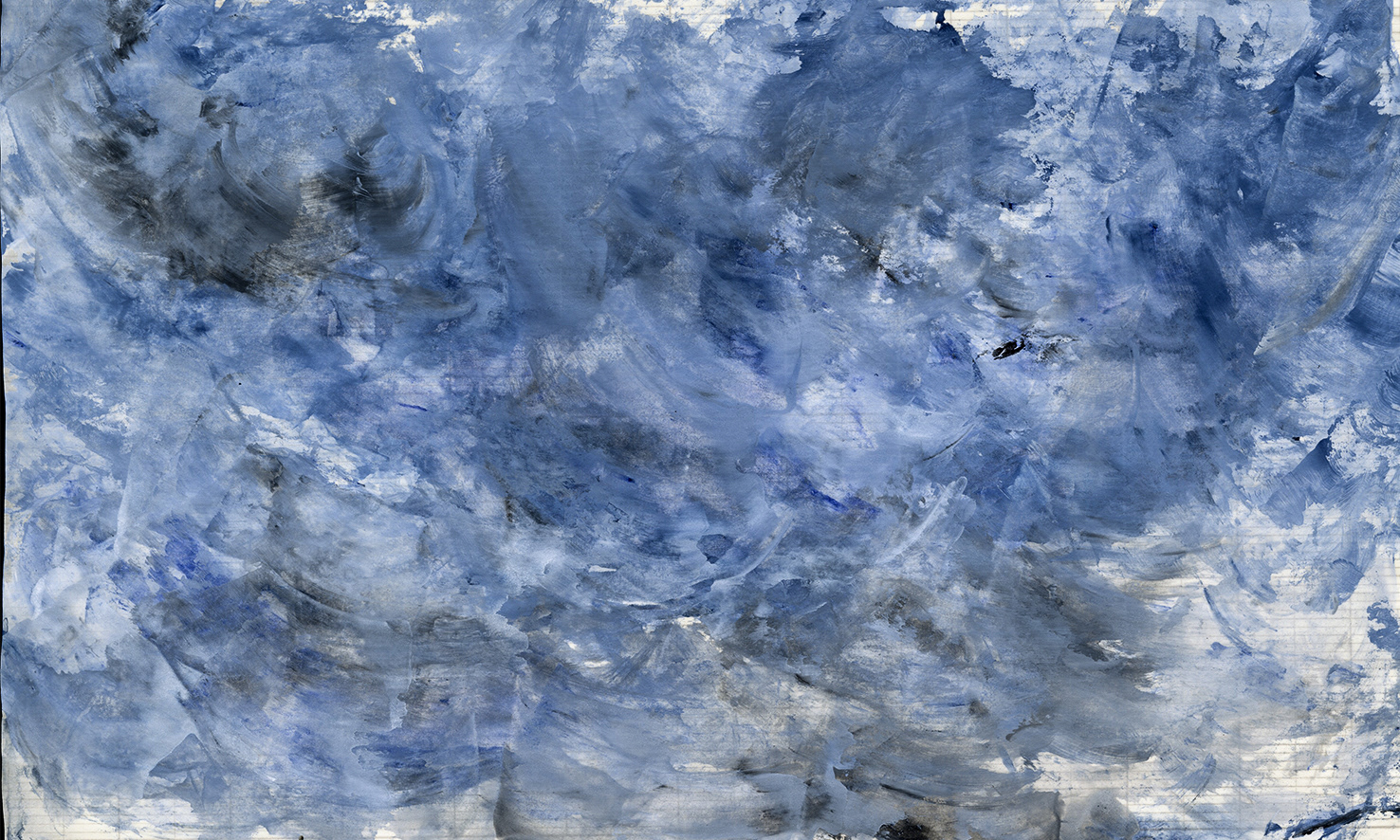
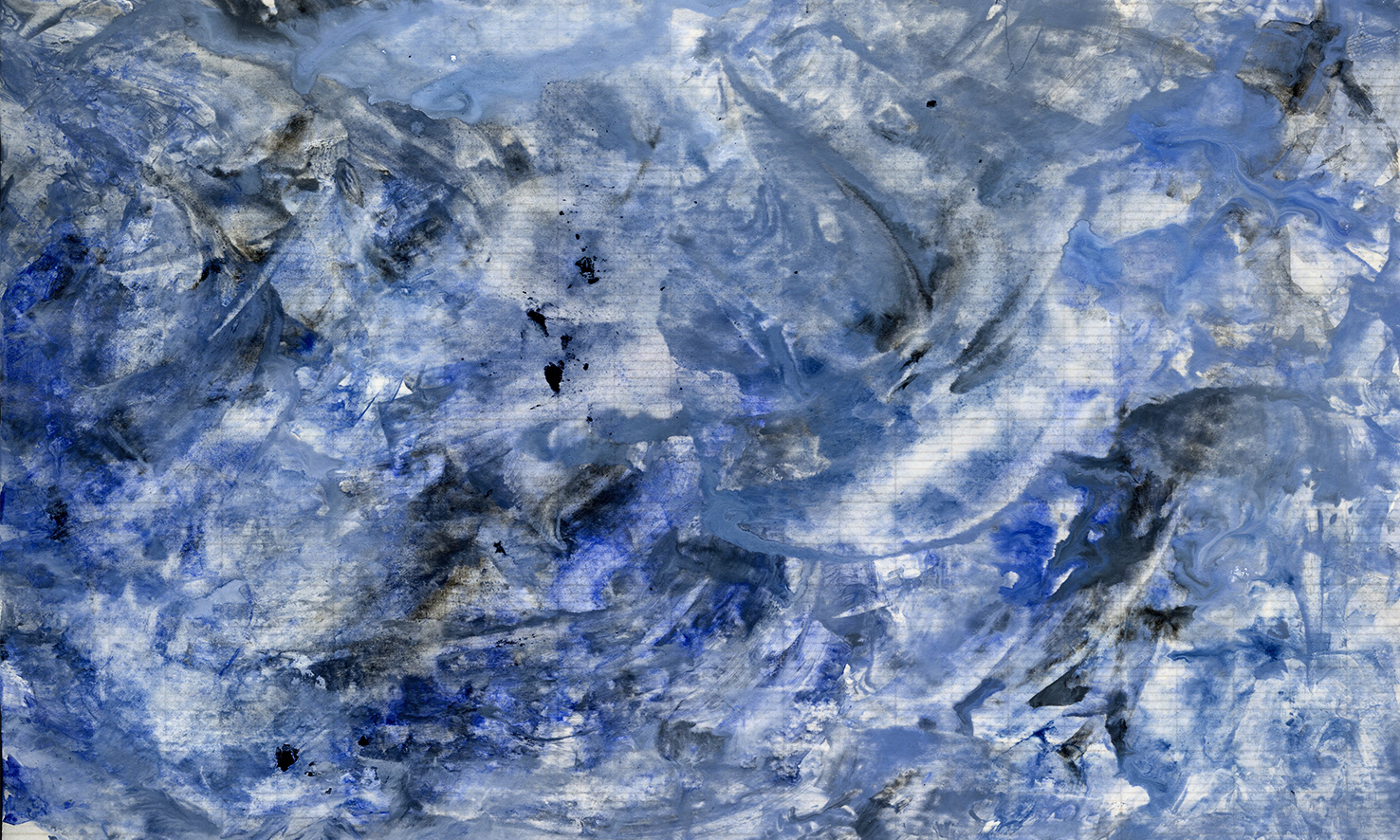
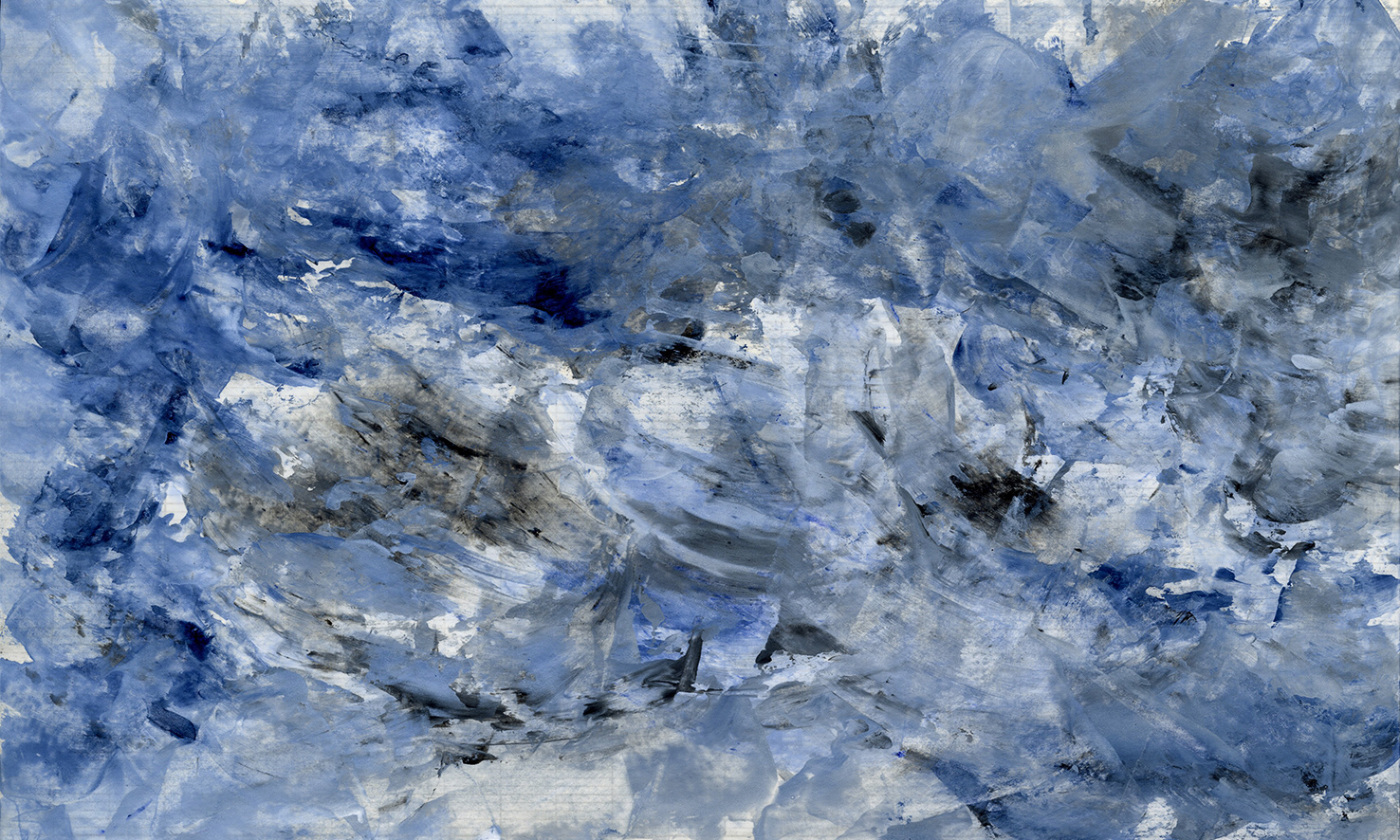
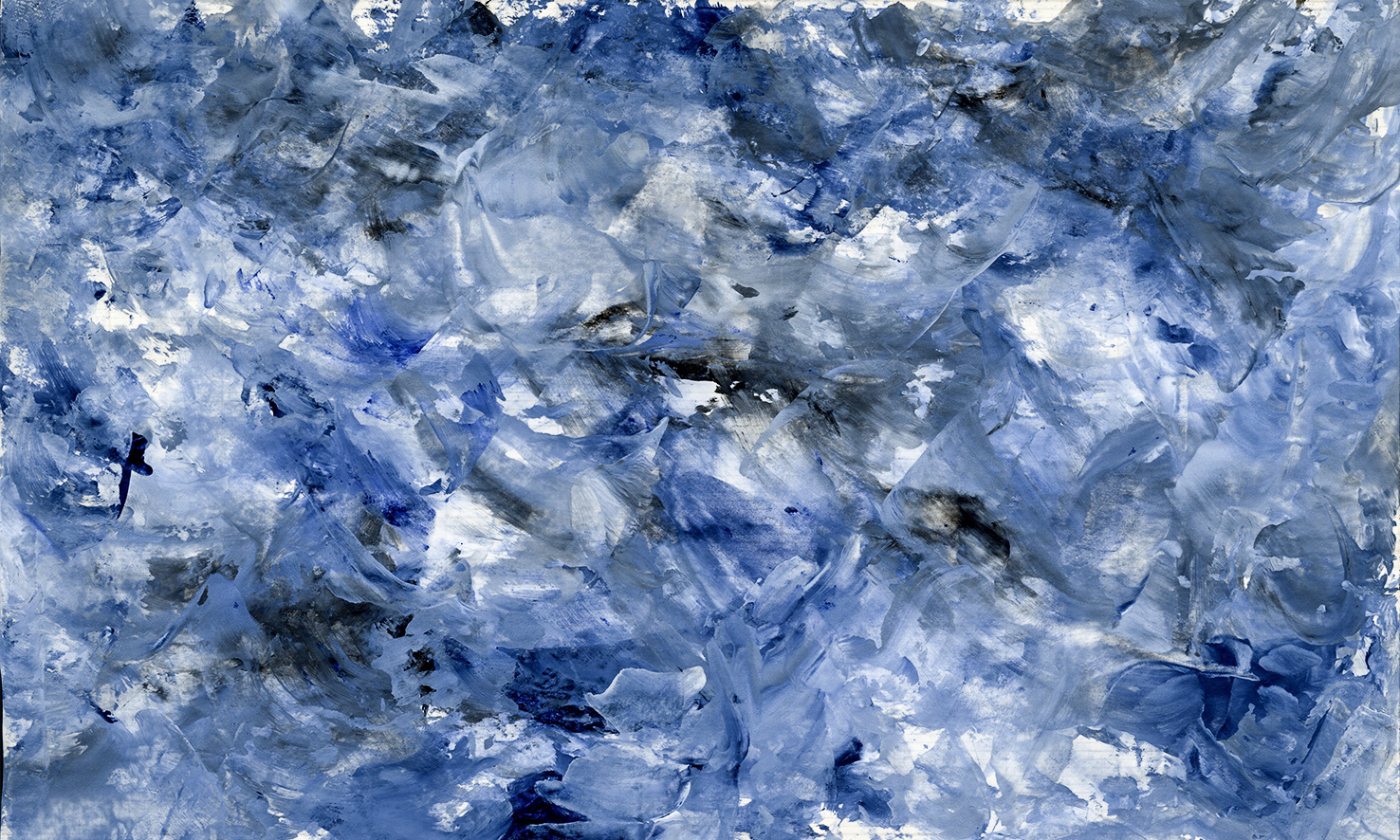
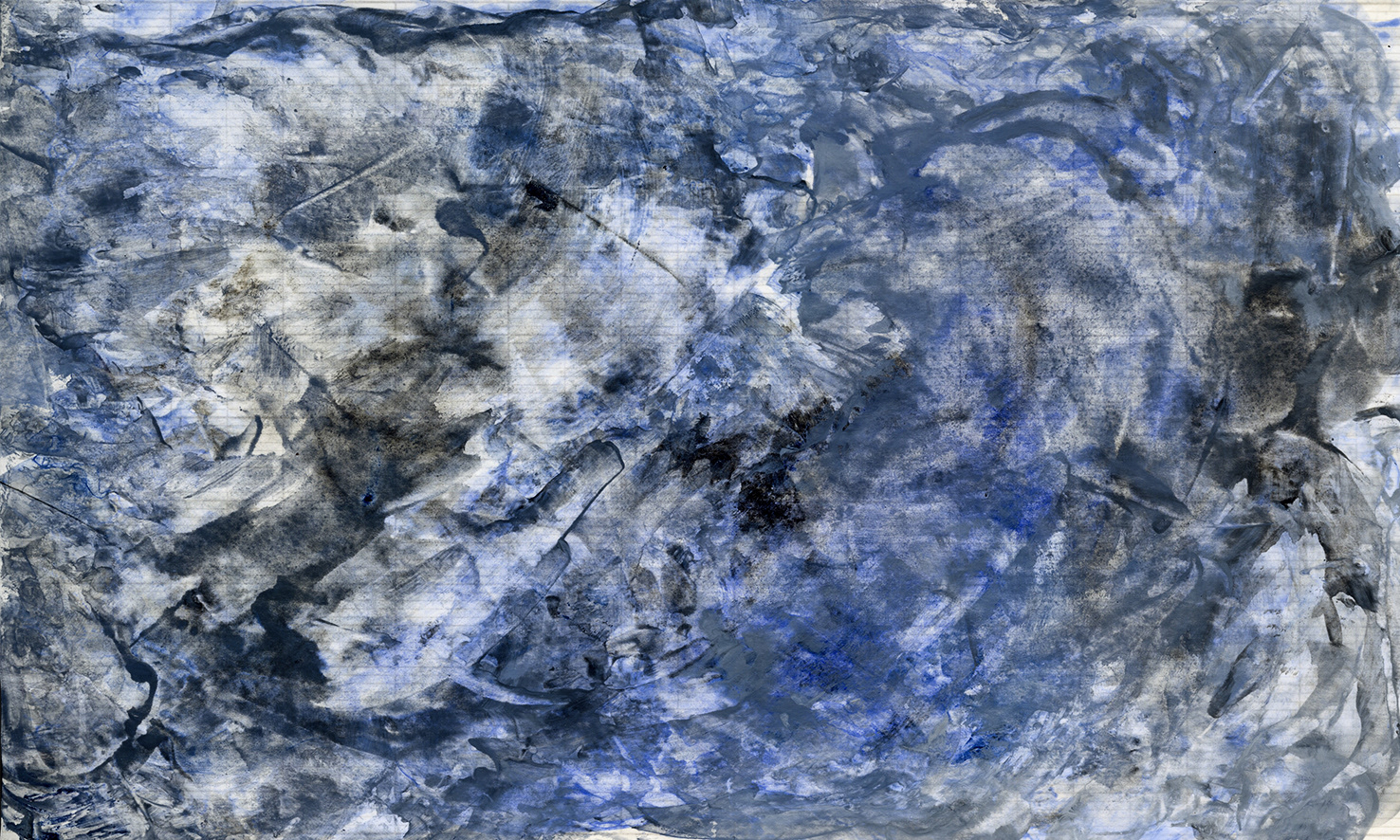
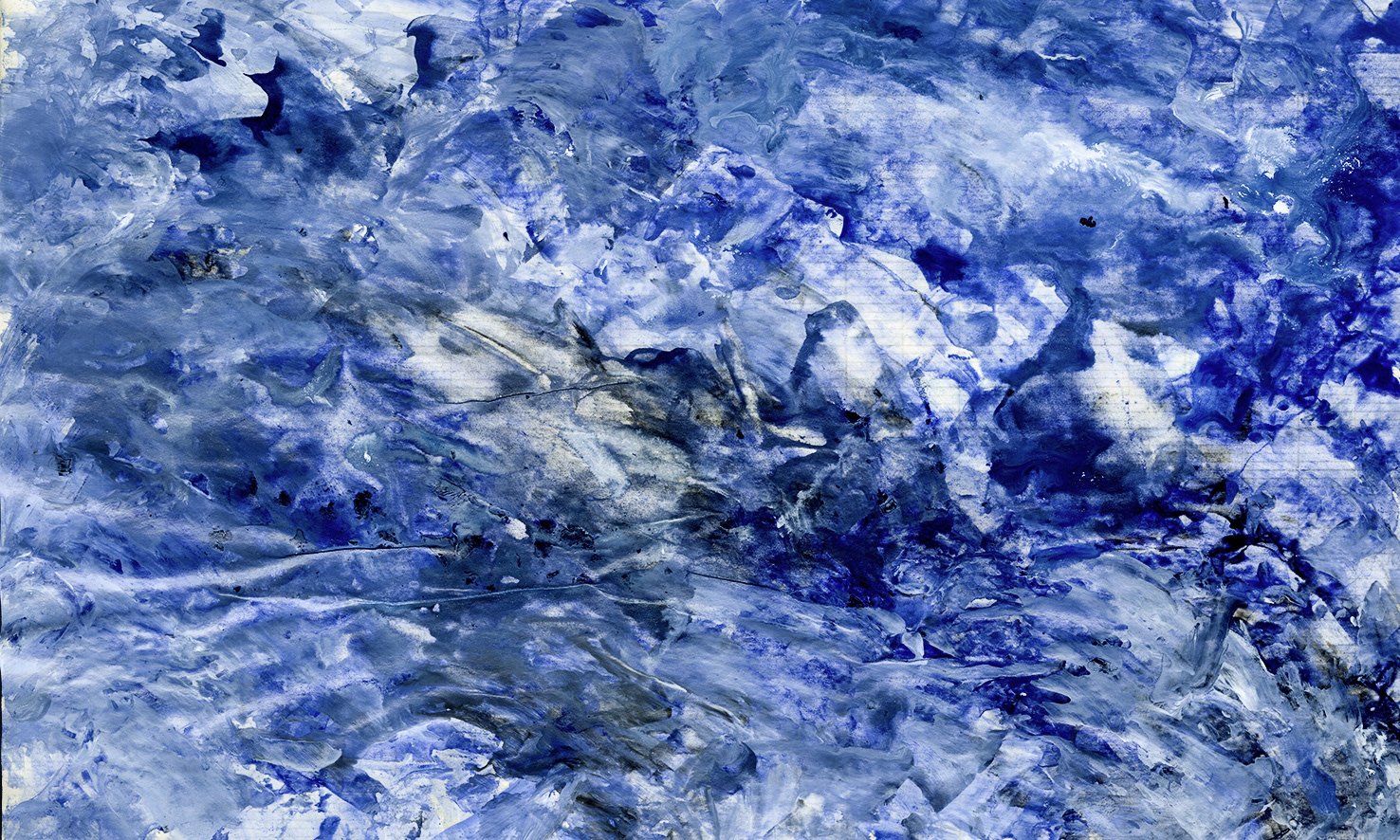
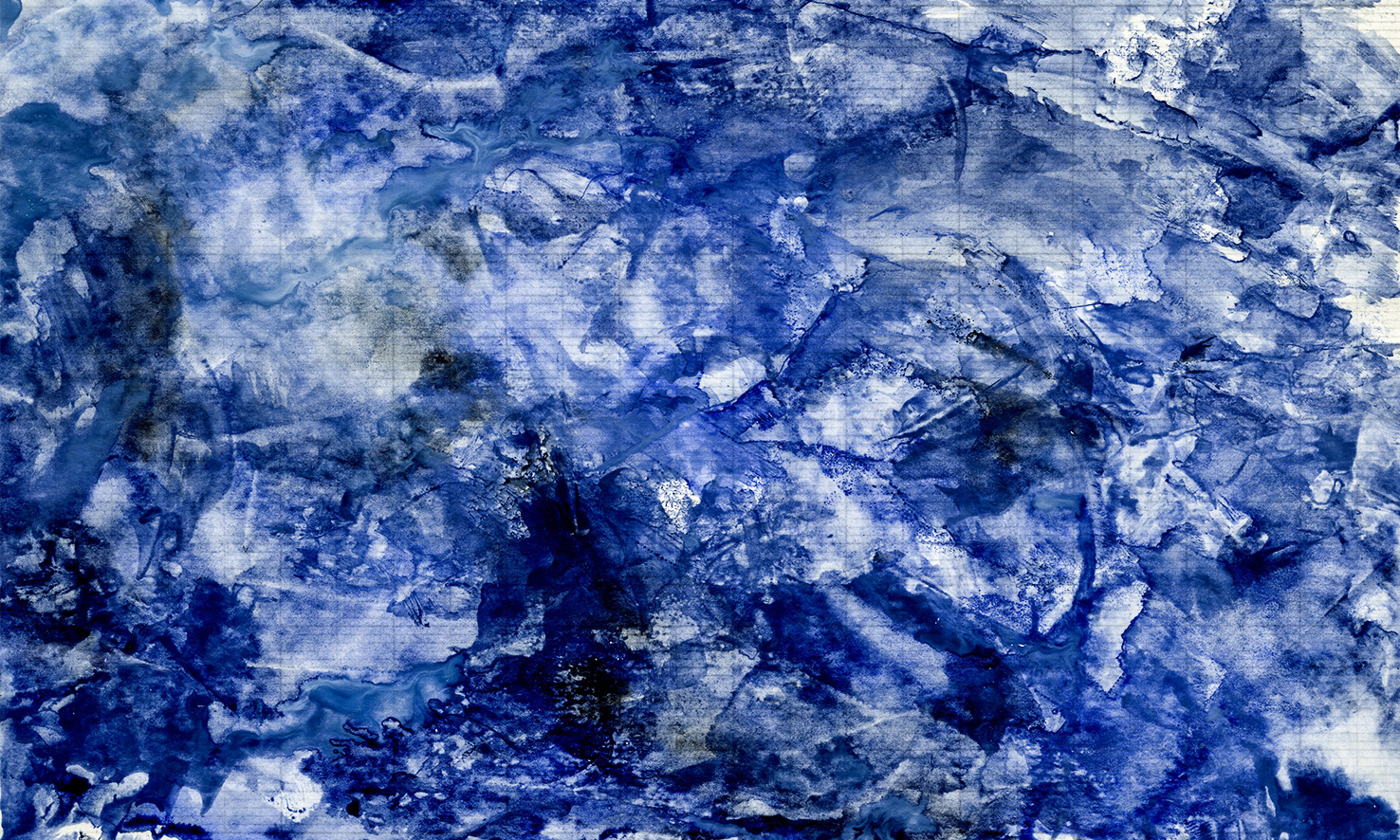
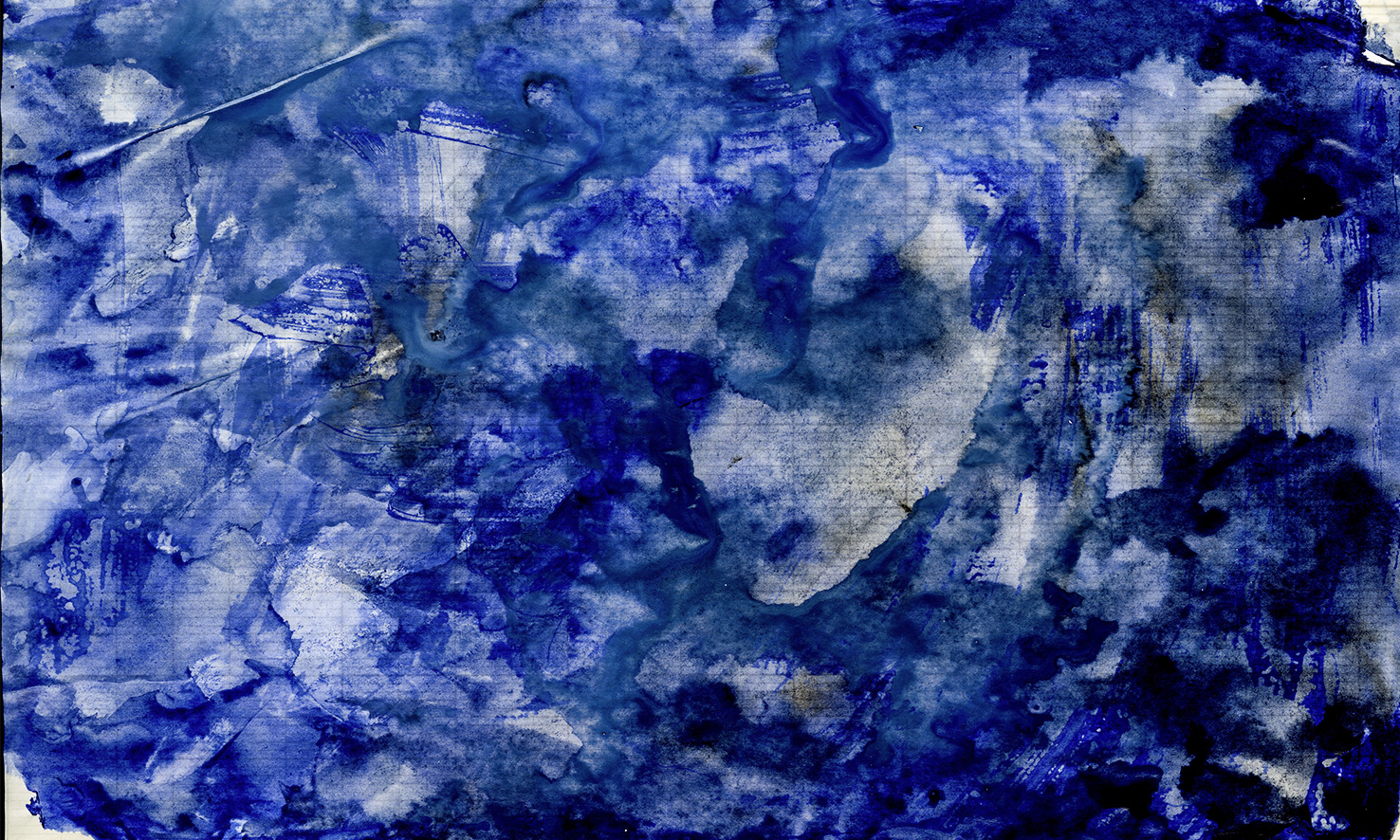
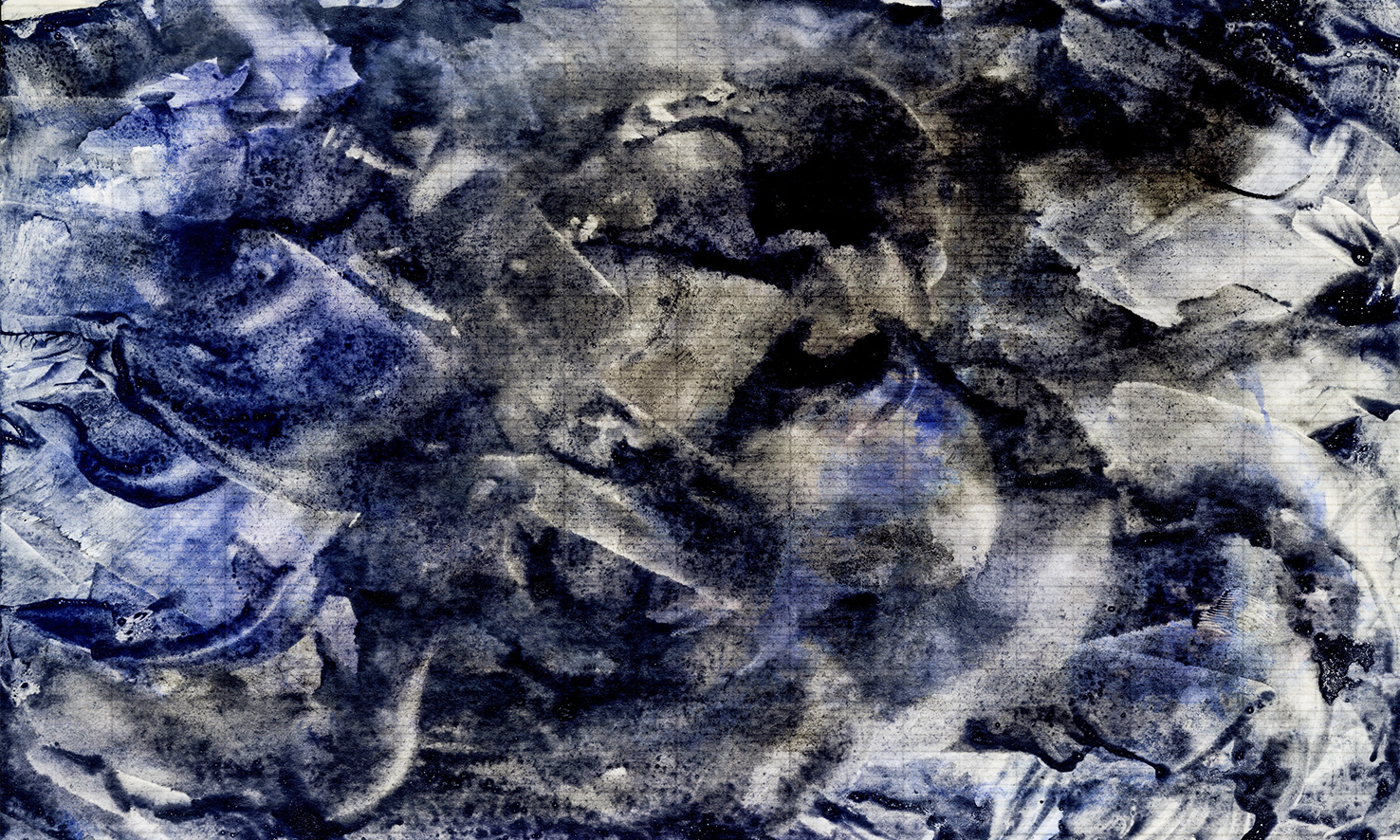
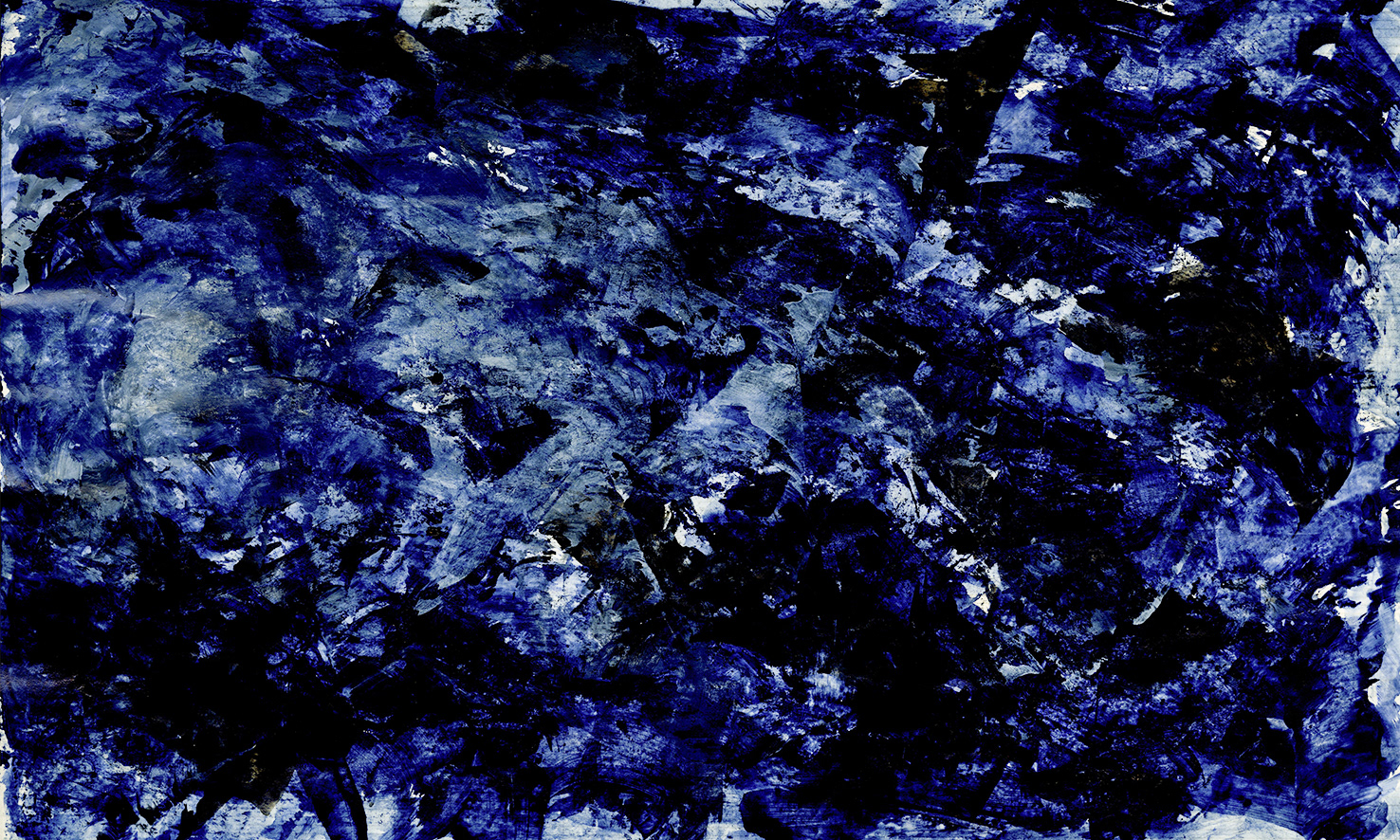
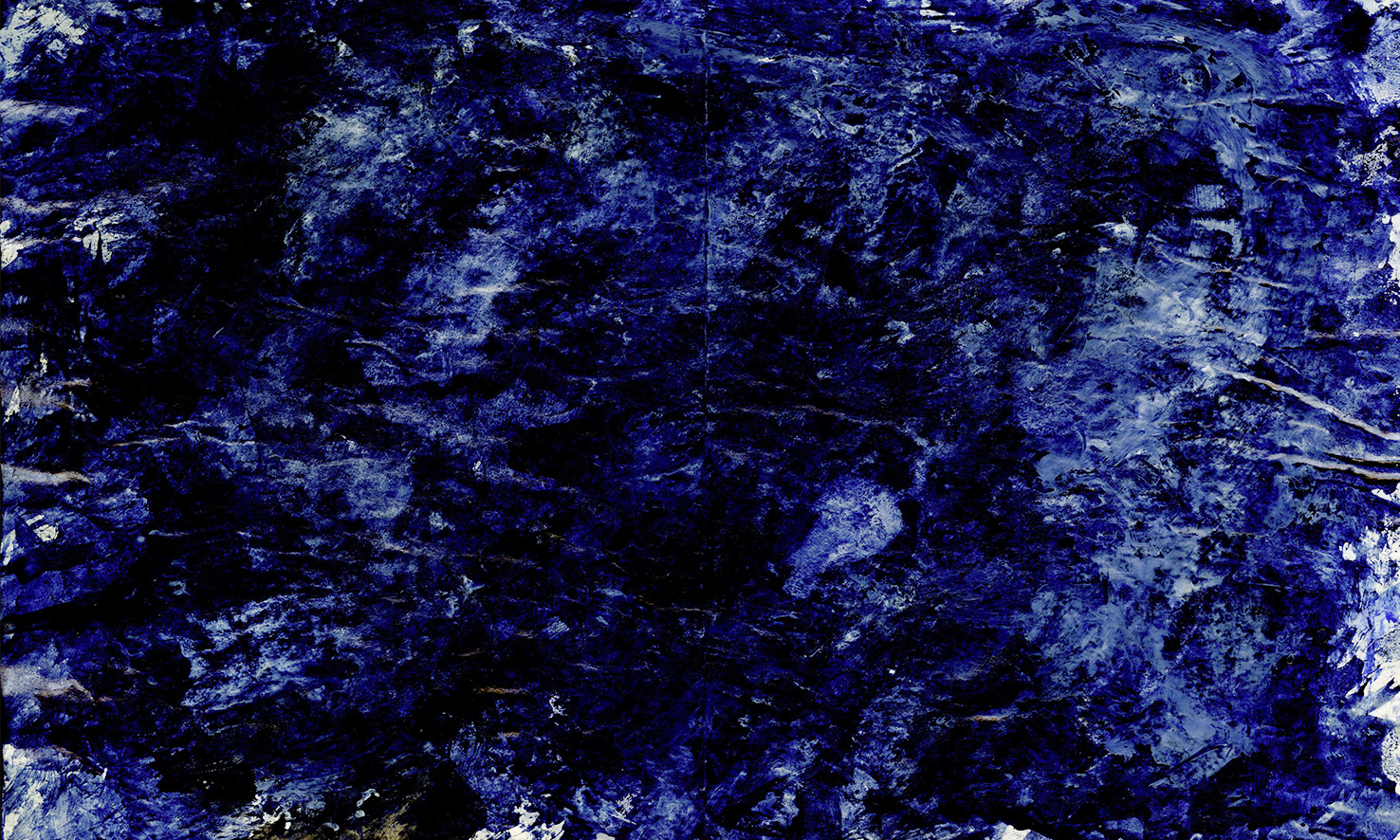
WHY MORSE CODE?
I'm fascinated by codes! I incorporated Morse code into my work in 2020, and it's now present in several projects and all volumes of the artist book series "Traverse under a falling sky". There are several reasons why I adopted it. The main one is that it reconnects me with the past, makes me anchor. Memories are important because they remind us of who we are, where we came from, and allow us to choose a direction to follow. My father was French, and he learned Morse code during World War II; as a child, we would play exchanging encrypted messages.
I'm fascinated by codes! I incorporated Morse code into my work in 2020, and it's now present in several projects and all volumes of the artist book series "Traverse under a falling sky". There are several reasons why I adopted it. The main one is that it reconnects me with the past, makes me anchor. Memories are important because they remind us of who we are, where we came from, and allow us to choose a direction to follow. My father was French, and he learned Morse code during World War II; as a child, we would play exchanging encrypted messages.
Another aspect that attracts me to Morse code is that I like to include semantic content in my production; however, I don't want the discourse to overlap with the visuality and poetics of the work. The written form of Morse code has a graphic force whose aesthetics I enjoy, and for the public that wants to dive deeper, it requires the act of deciphering, offering a more prolonged and playful experience of connection.
From a philosophical point of view, according to Vilém Flusser, we have two types of media to transmit codes or messages: linear, where thought is expressed in text, and surface, where thoughts are expressed in images. Digital technology has inaugurated a new era in which image and text integrate, as the image translated into a binary system also becomes text. But we are still conditioned by the linear character of a narrative. It's necessary for "surface-thought" to incorporate "line-thought". Only then will we move towards a new mental structure. Morse code can be seen as a pioneering system of the binary system, a precursor to the digital era. The text in Morse code has a graphic visuality that brings it closer to the image.
OTHER CONTEXTUAL INFORMATION
In the United States, labor is expensive. One way to make artistic production financially viable is to research manufactured materials and objects and incorporate them into the work. I often start with an industrialized article that attracts me, and the work develops around it. An example of this is the mini marble card holders. When I saw them advertised online, I could visualize and conceive the Traverse 2 and 3. The blocks emerged as a great solution; they symbolize the stones we find along our traverses. Just like Morse code, the act of embroidering remind me of my childhood. I learned to knit and embroider with my grandmother when I was 5 years old.
In the United States, labor is expensive. One way to make artistic production financially viable is to research manufactured materials and objects and incorporate them into the work. I often start with an industrialized article that attracts me, and the work develops around it. An example of this is the mini marble card holders. When I saw them advertised online, I could visualize and conceive the Traverse 2 and 3. The blocks emerged as a great solution; they symbolize the stones we find along our traverses. Just like Morse code, the act of embroidering remind me of my childhood. I learned to knit and embroider with my grandmother when I was 5 years old.
(M.AL.A. - MORADA ANDARILHA DE LIVROS DE ARTISTA)
"M.A.L.A. (Suitcase): Wandering Abode of Artist’s Books" was born out of a desire to offer a closer look at the multiple universes of artist's books. Estela Vilela, bookbinder and artist based in São Paulo, Monique Allain, visual artist based in New York, Chica Boyriven, visual artist based in Paris, and Lili Pardini, book creator based in Embu das Artes, combined their experiences to offer a one-year online and in-person artistic residency focused on the production of artist's books. All the works developed and completed by the participants are transported in the M.A.L.A. for an international exhibition, with a different destination each year. Local artists receive the works, participate in the exhibition, and establish a dialogue between their artist's books and the books of the resident artists. The M.A.L.A. then returns to São Paulo, accompanied by a second suitcase containing the works of international artists, for an exhibition in São Paulo and possibly other destinations. In the first edition (2024), the M.A.L.A. traveled to Mexico City, and the works were exhibited at the El Rule Cultural Center. In this second edition (2025), the M.A.L.A., invited to present the artist's books at the Galerie Enseigne des Oudin and the Médiathèque Marguerite Duras, lands in Paris.
